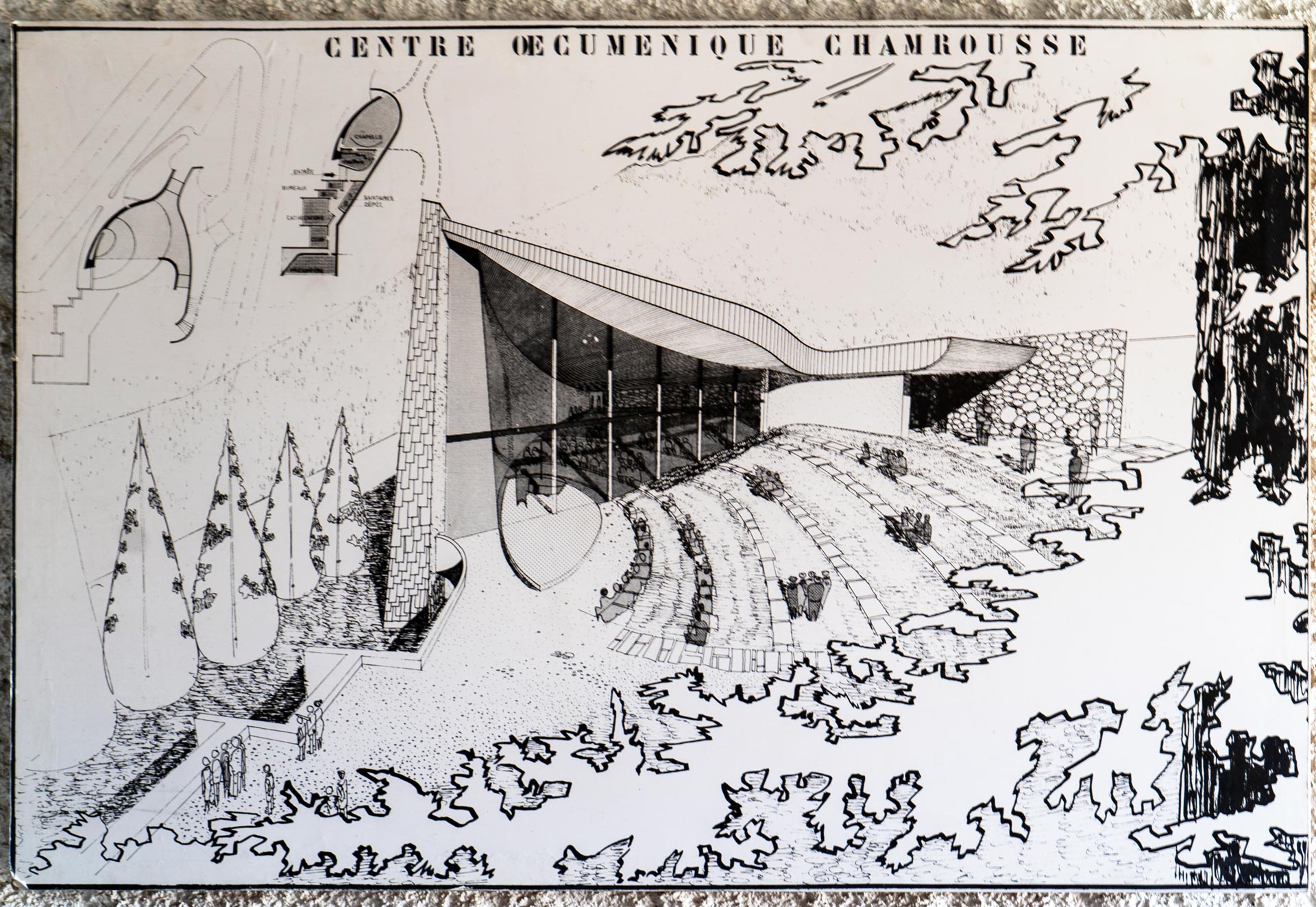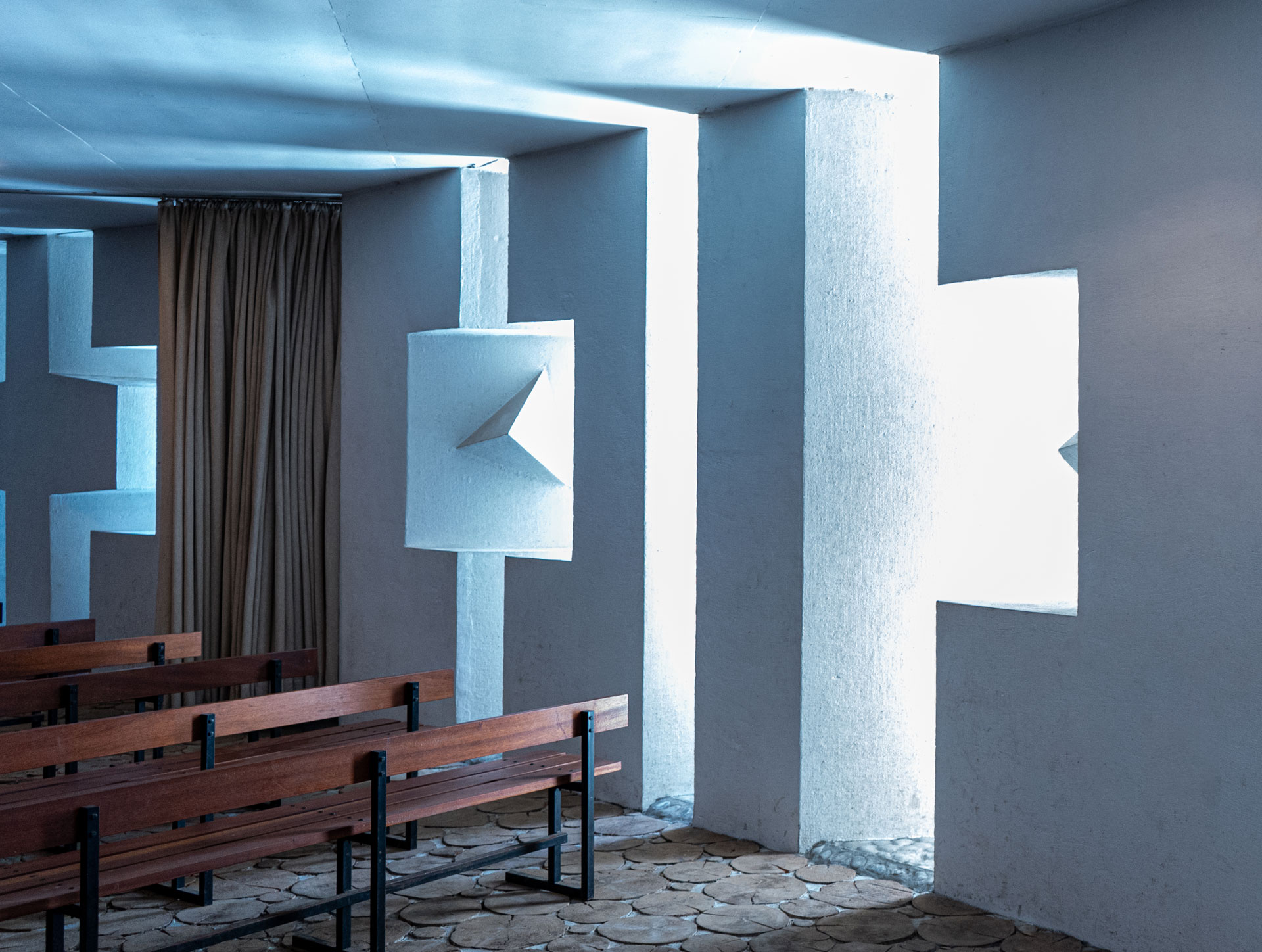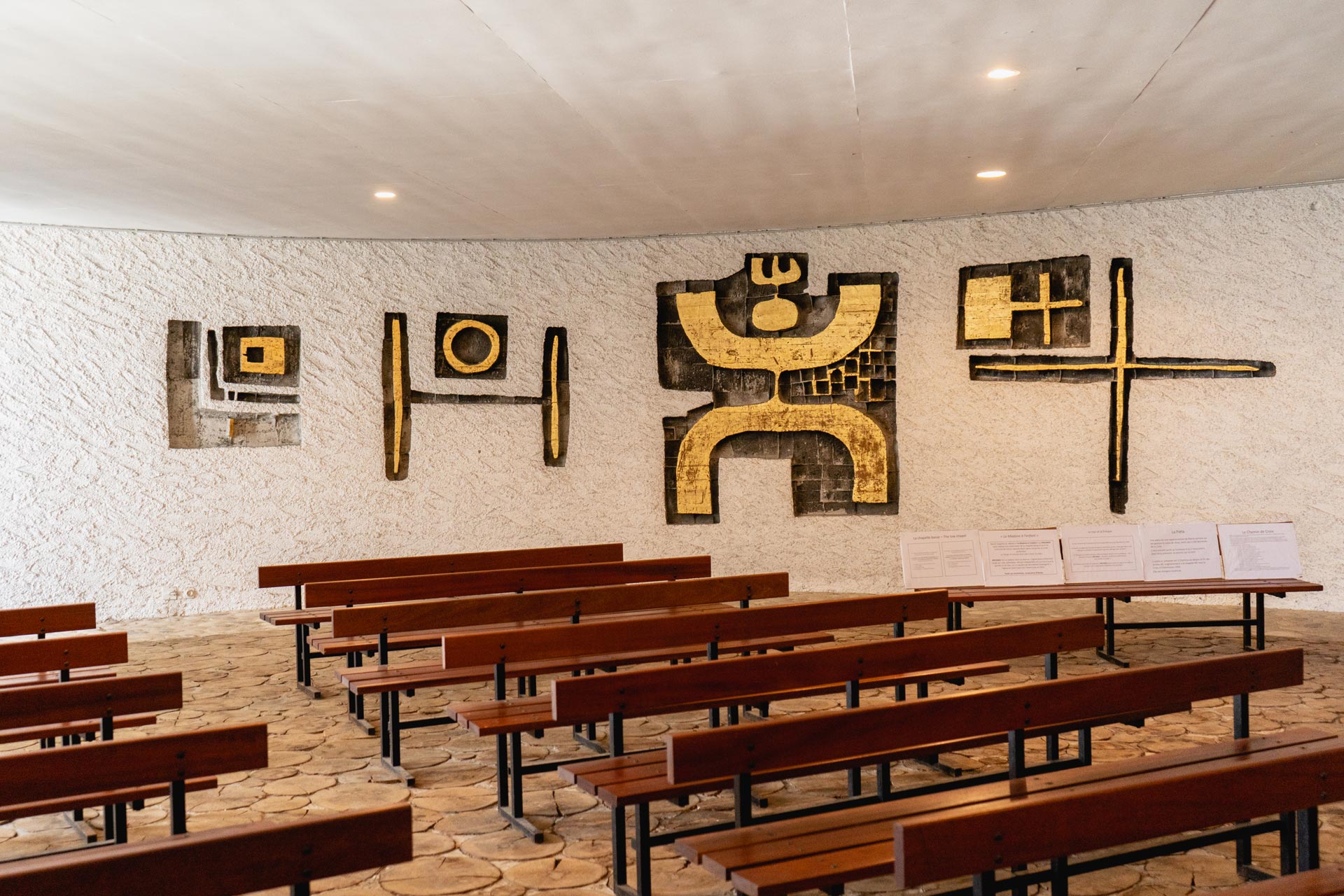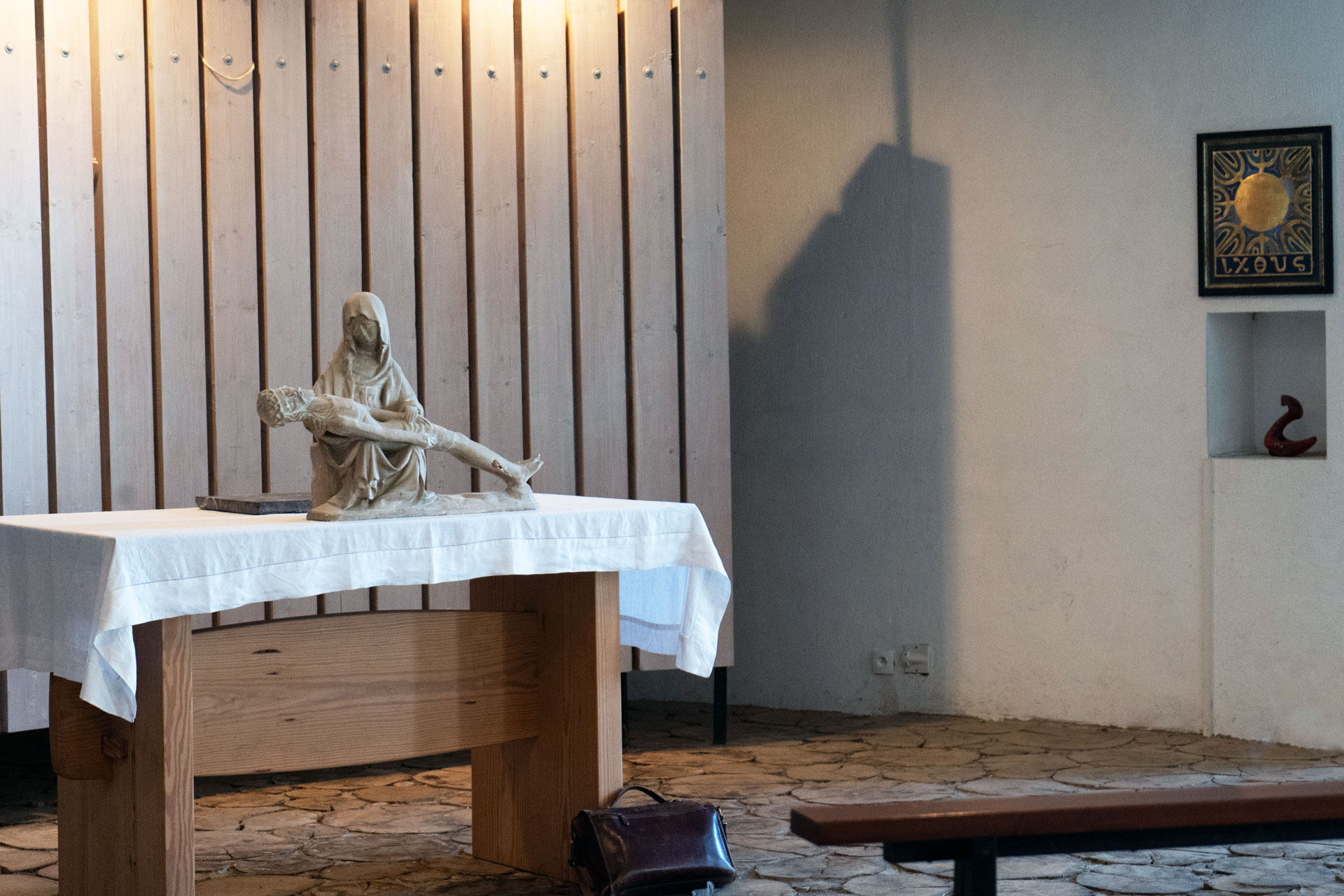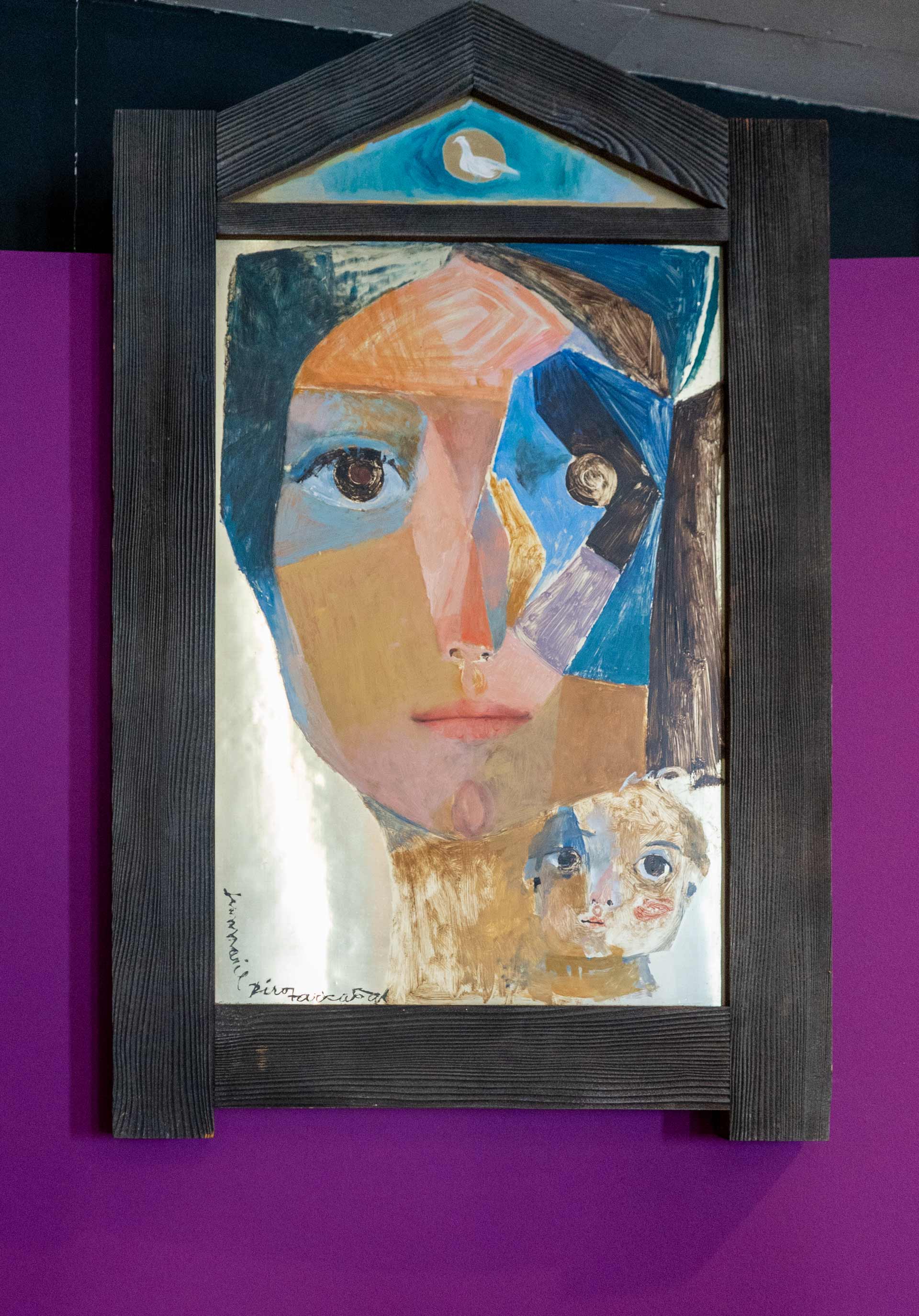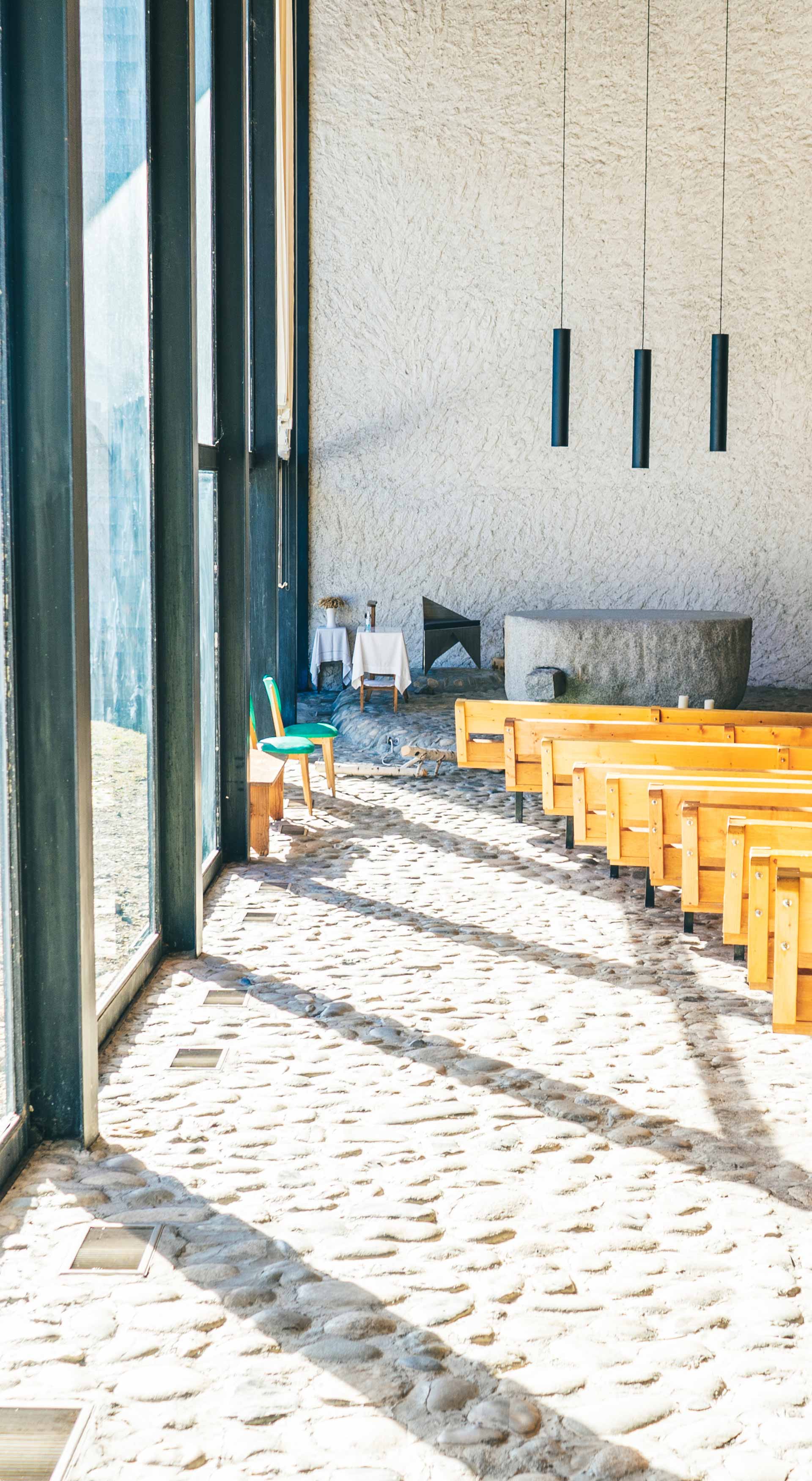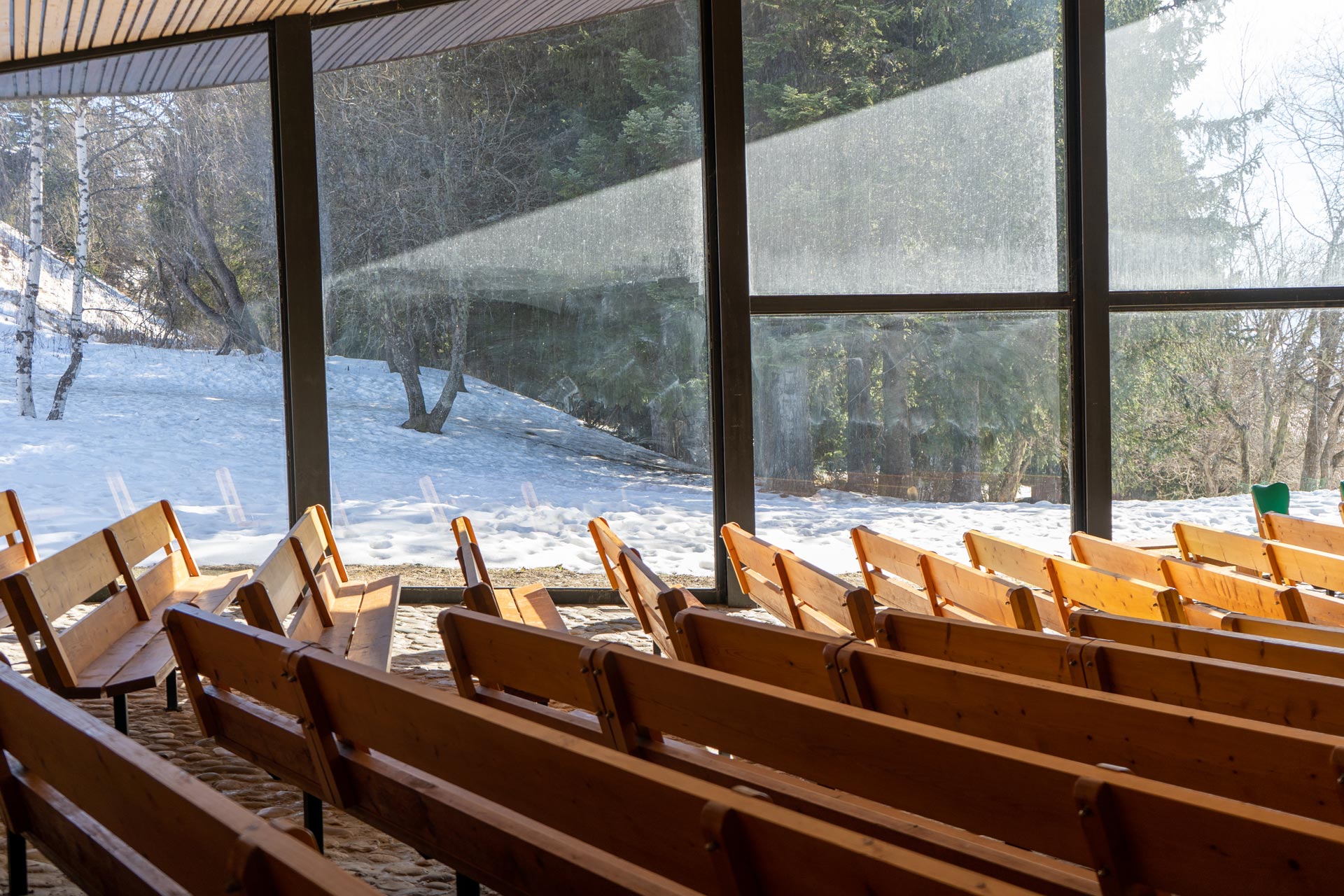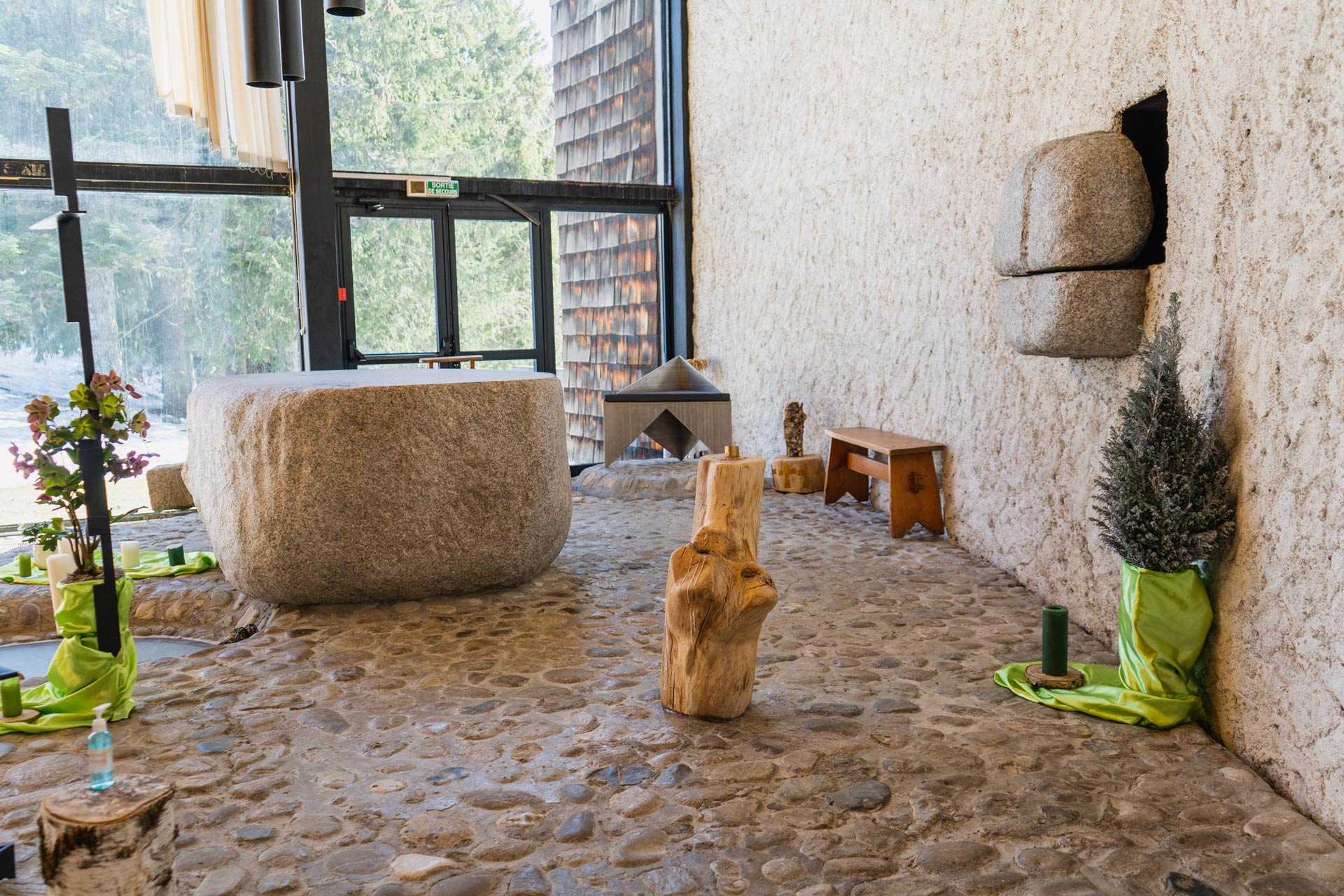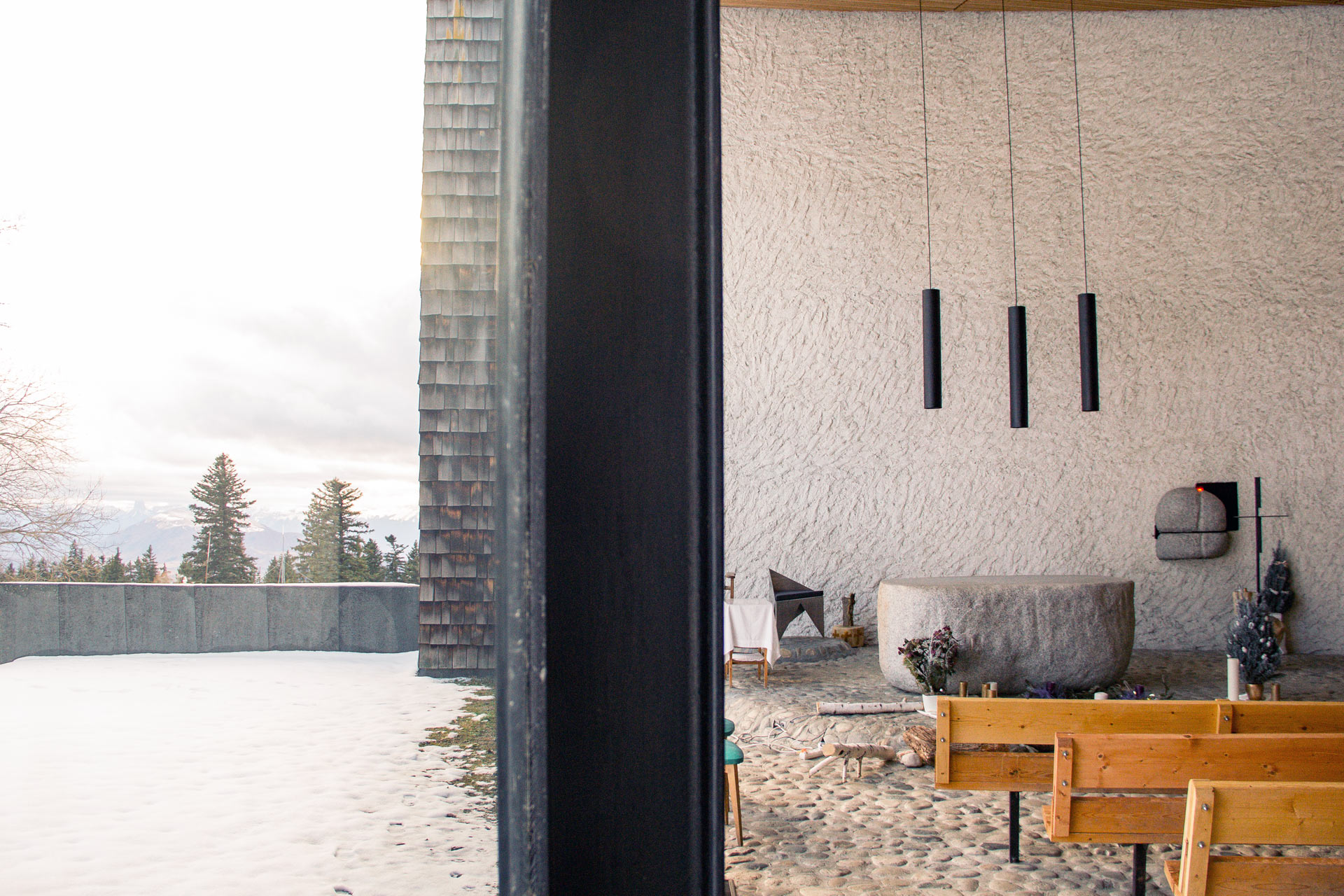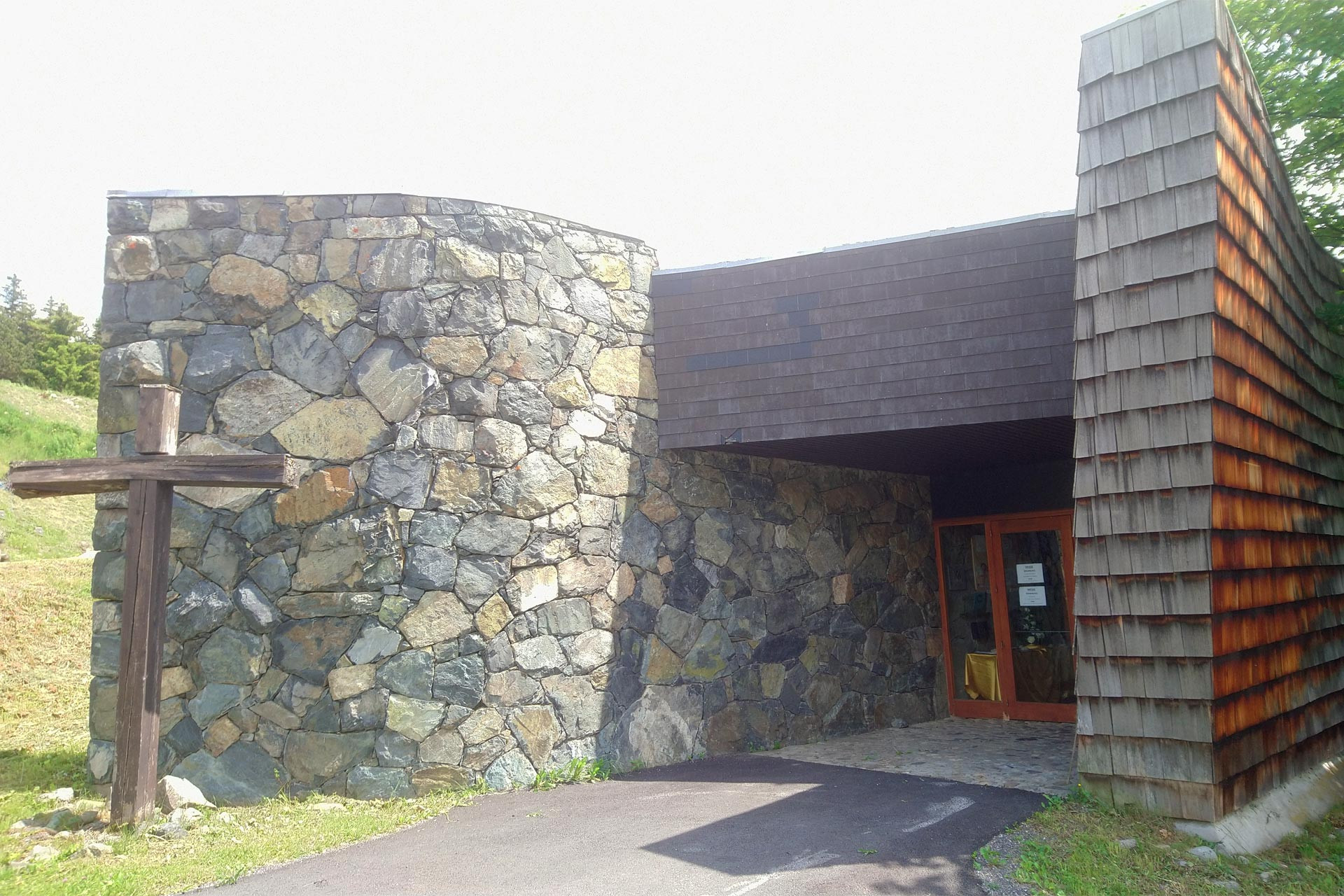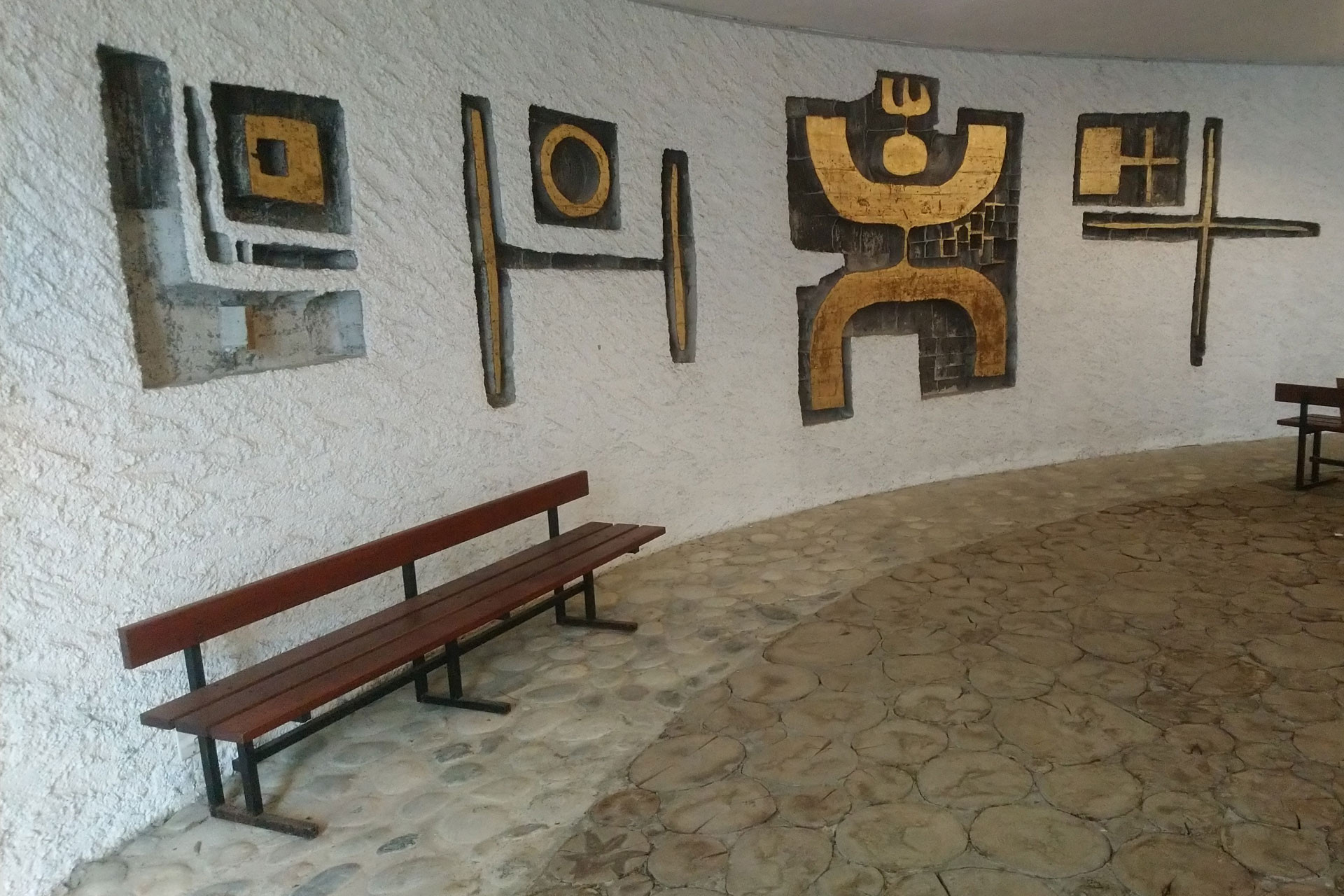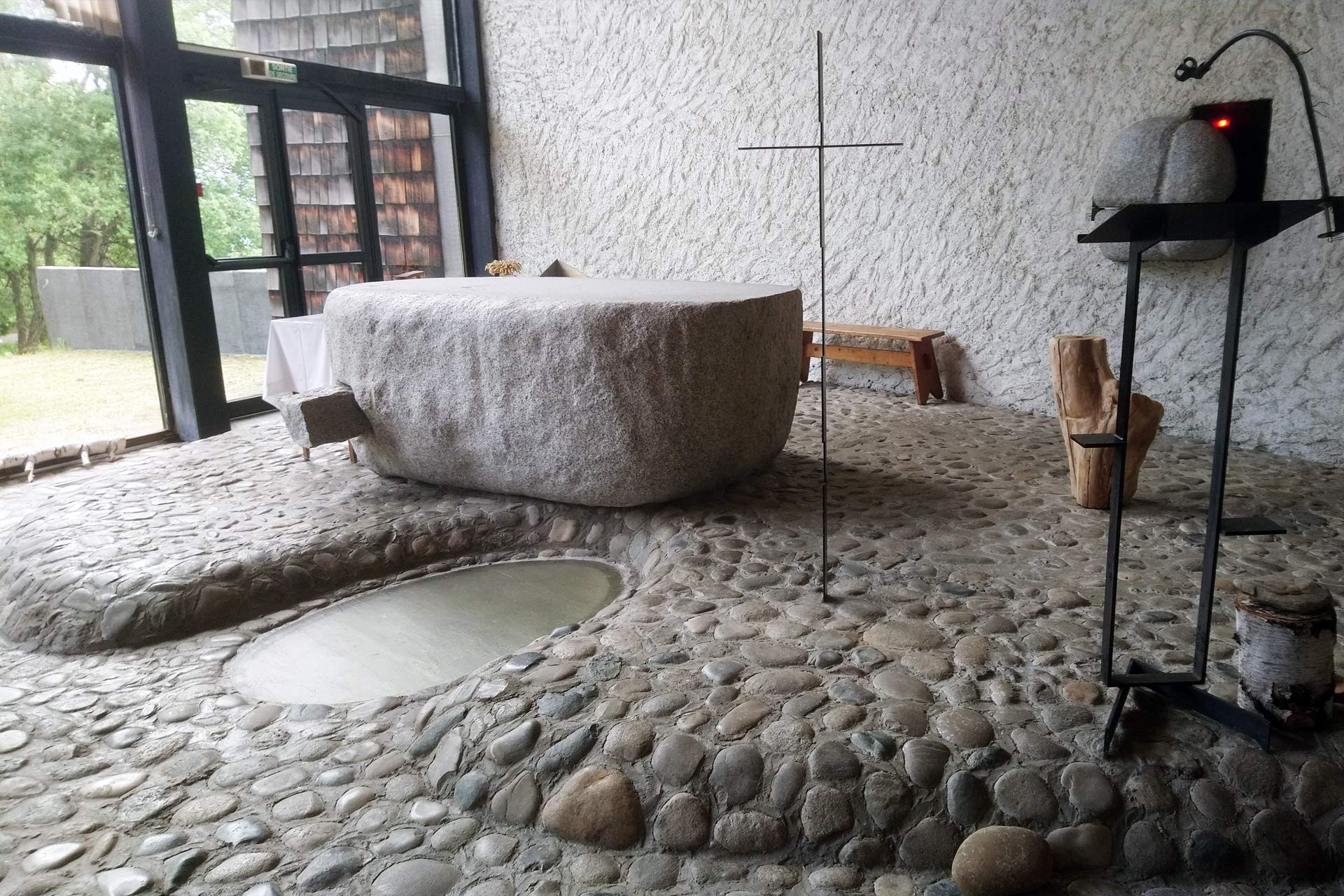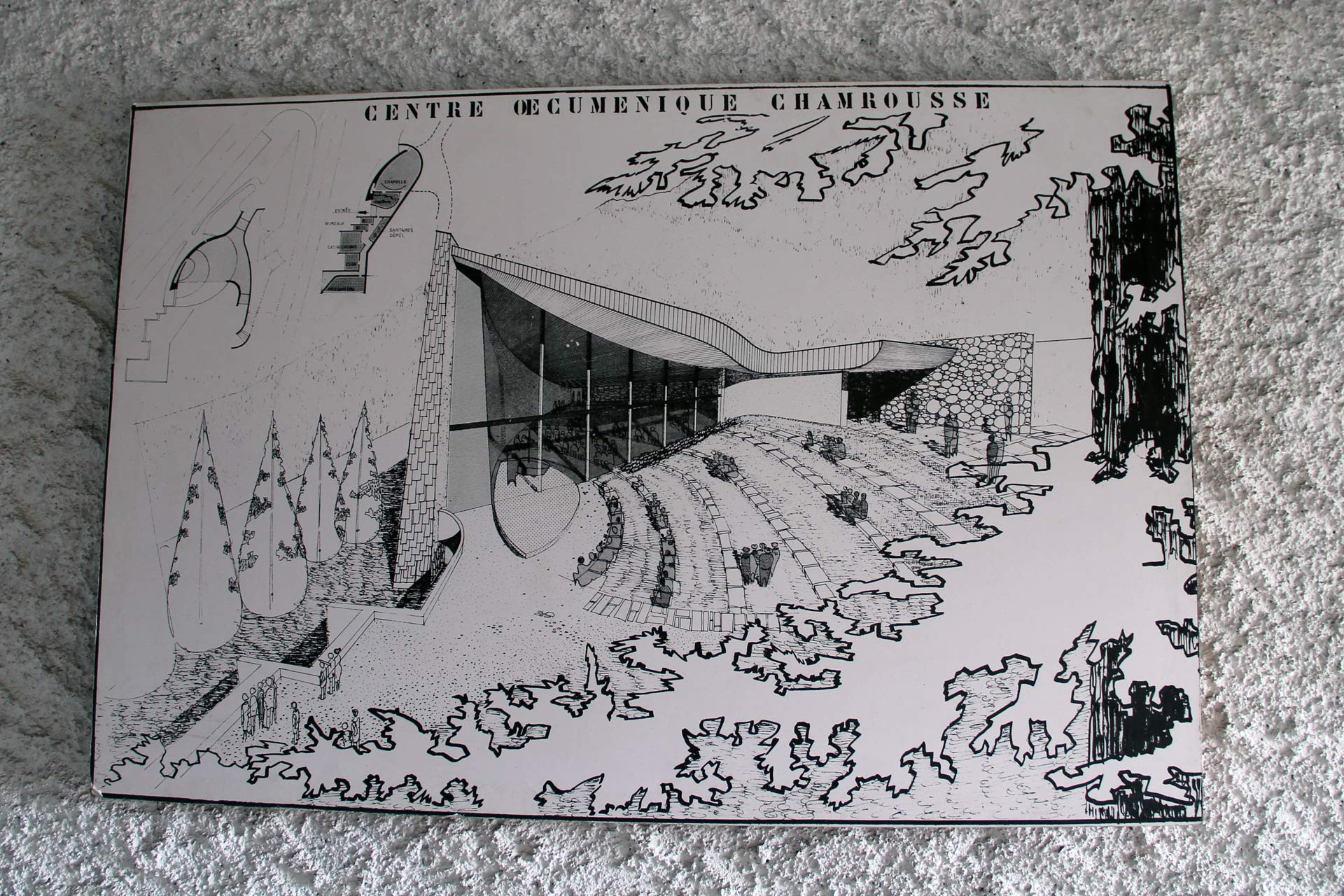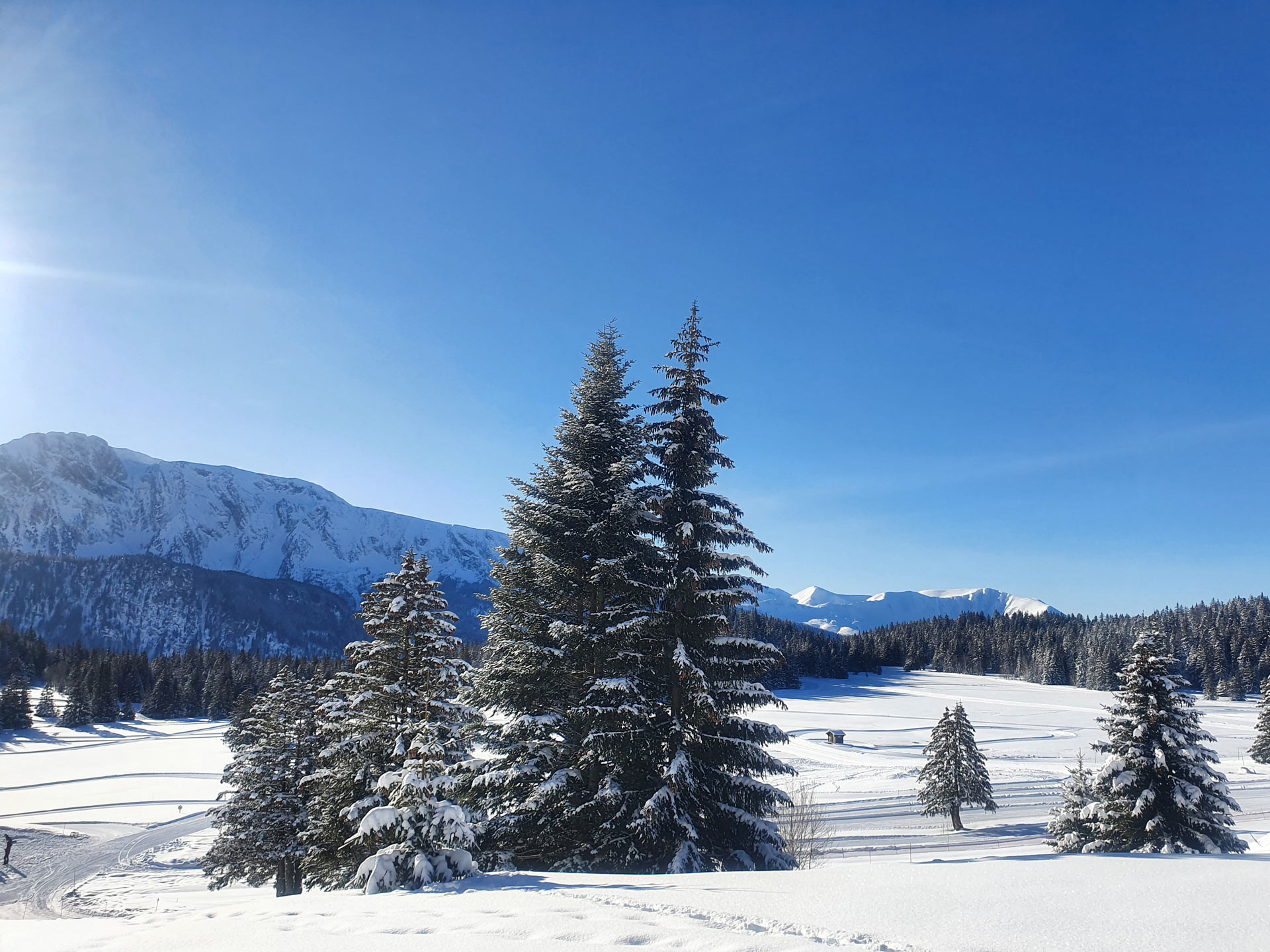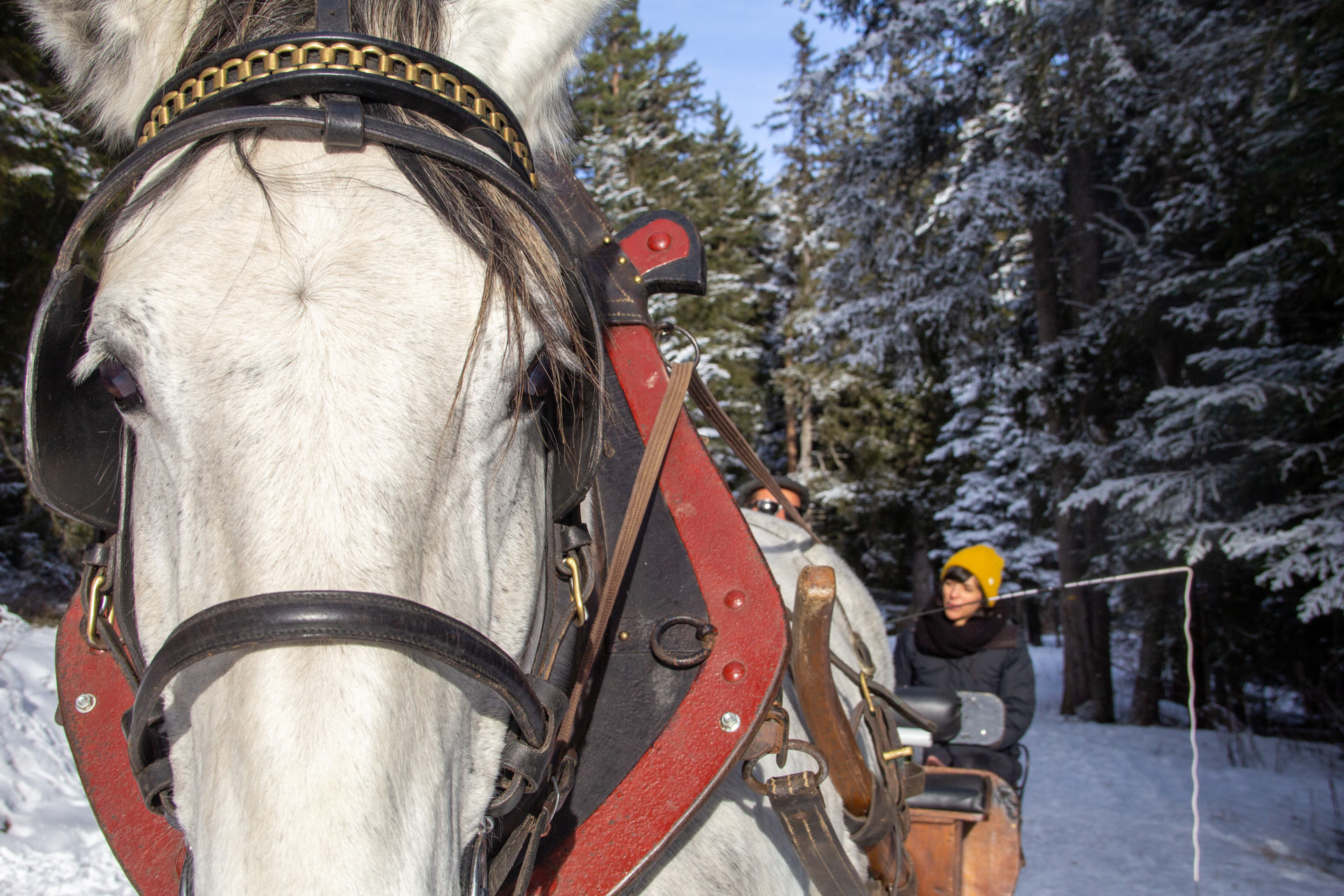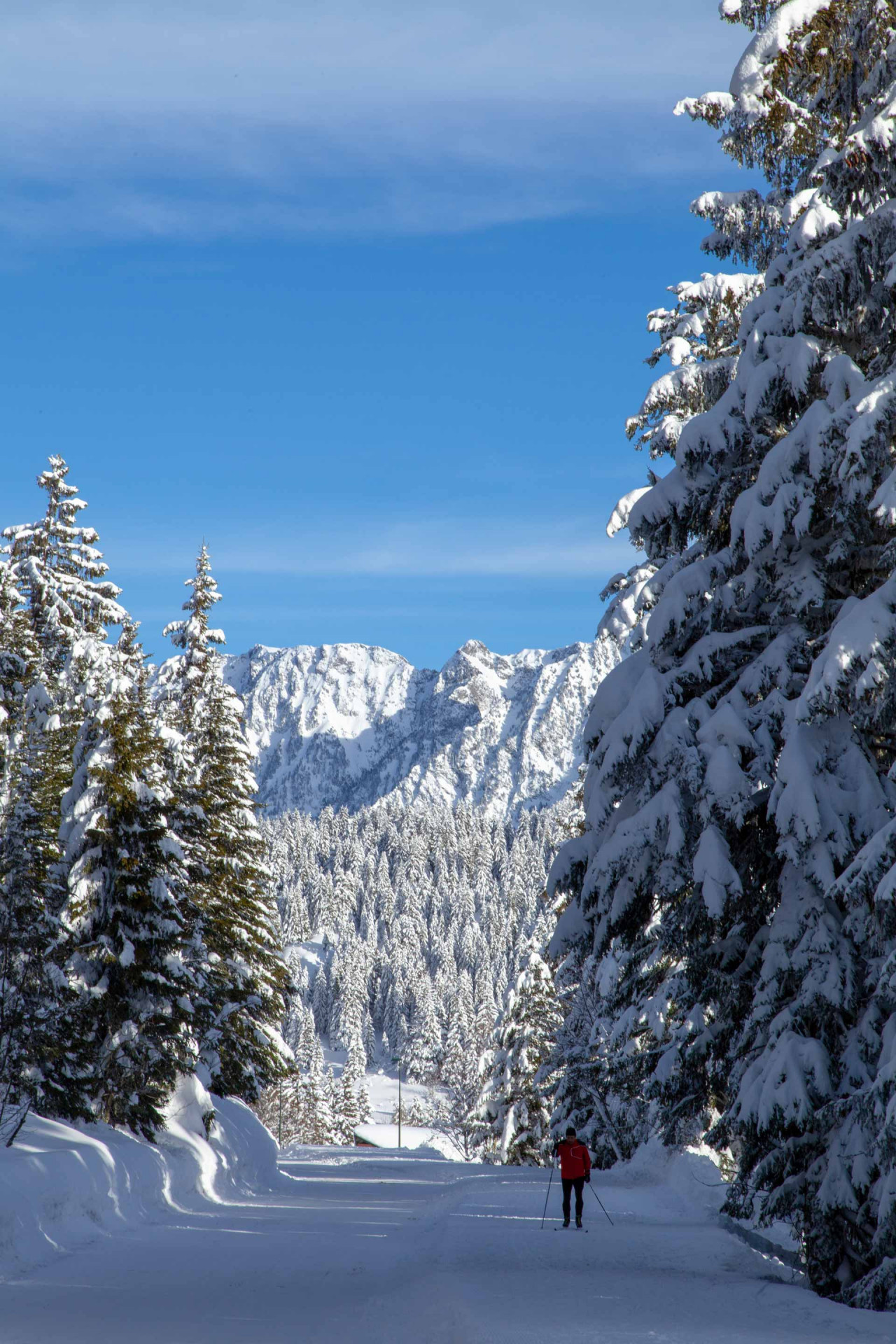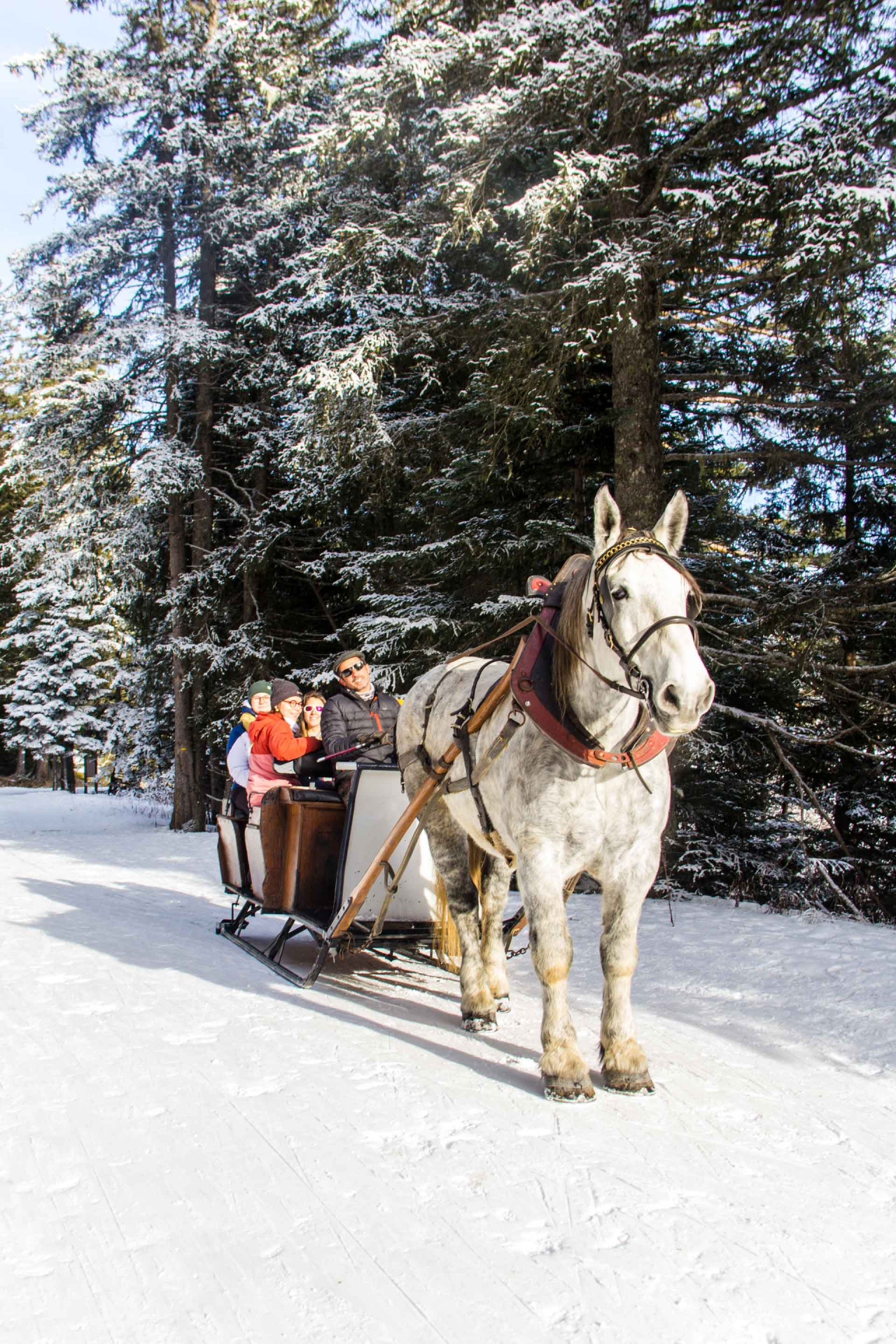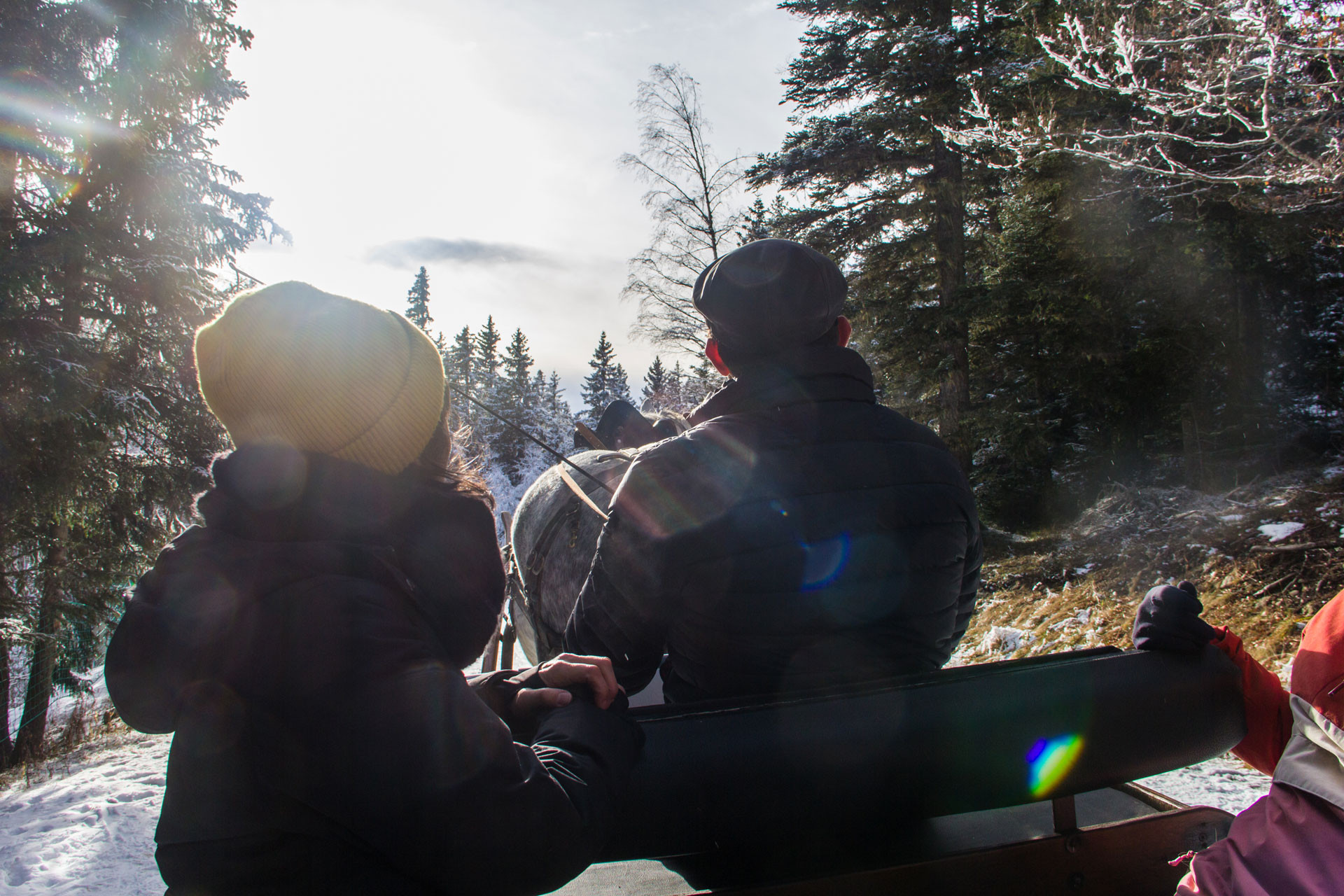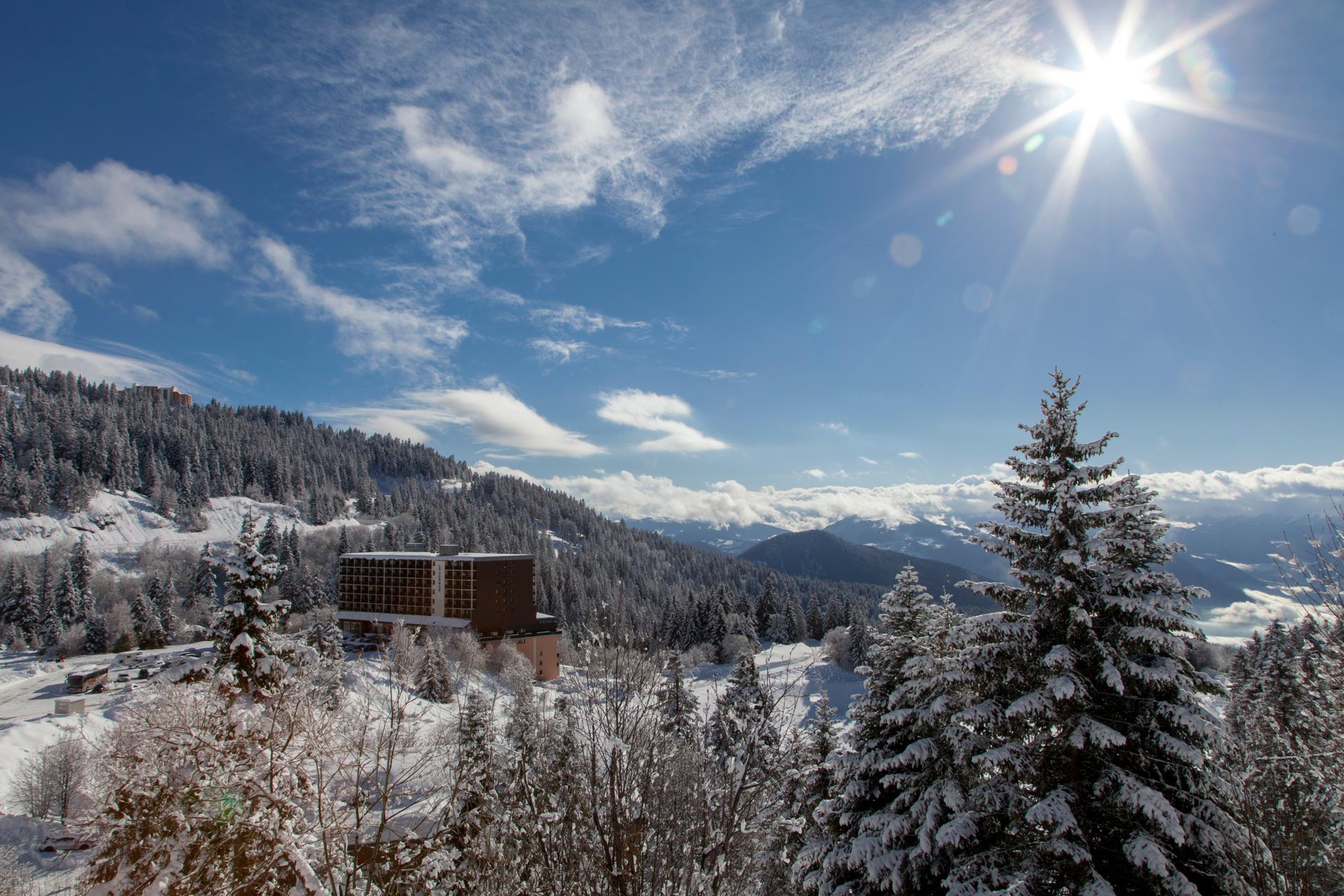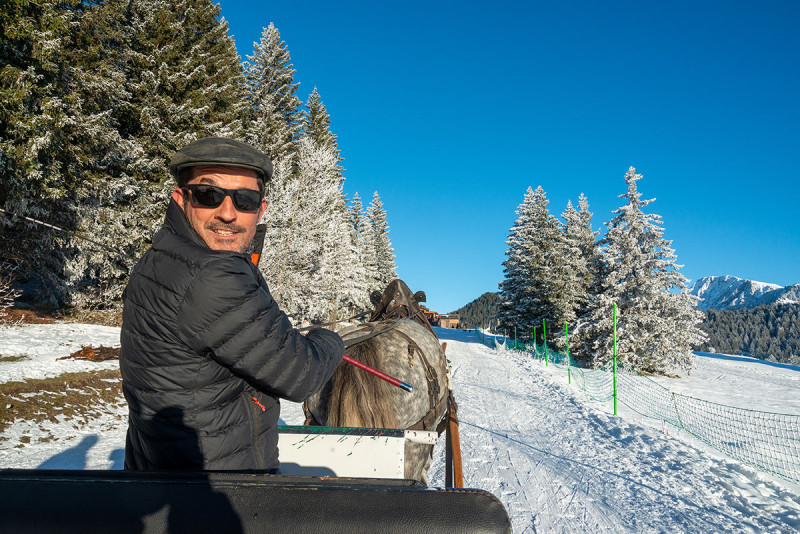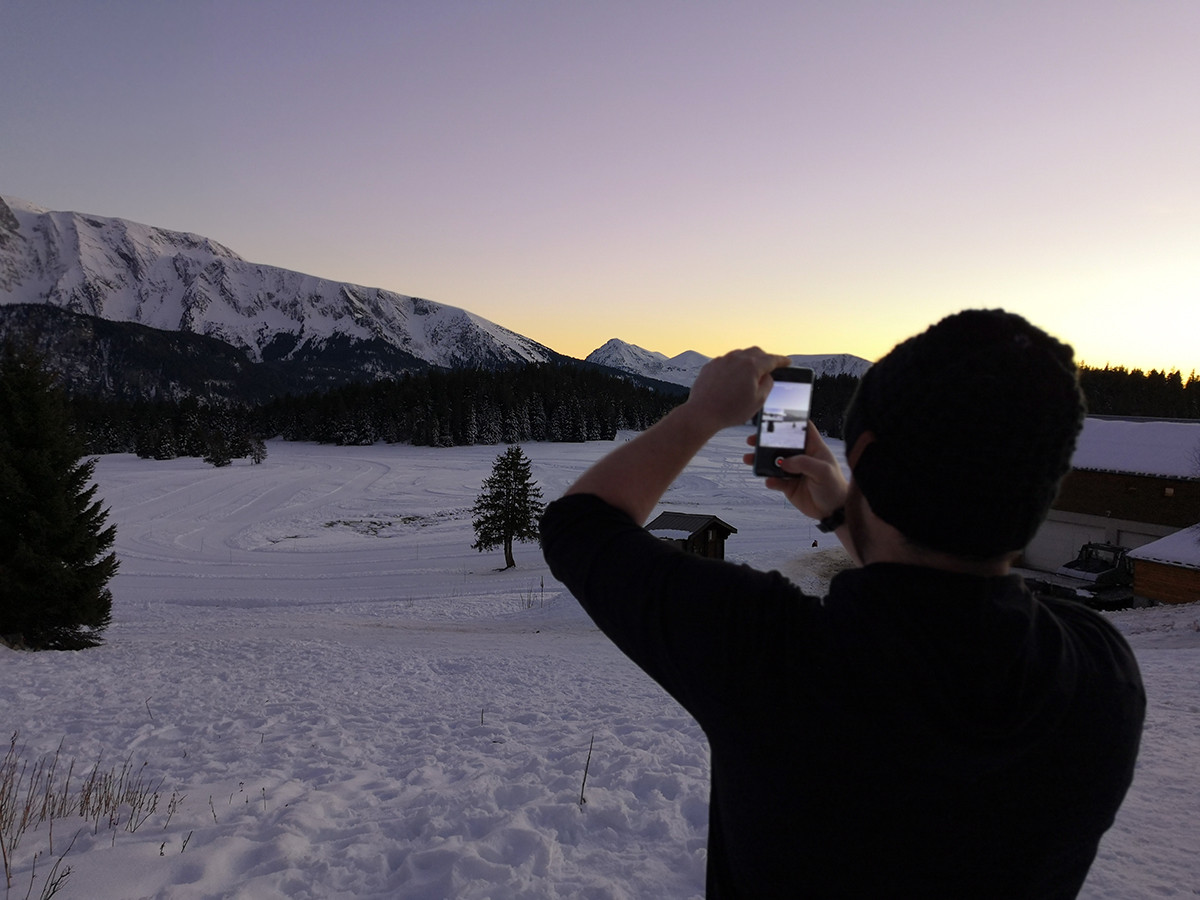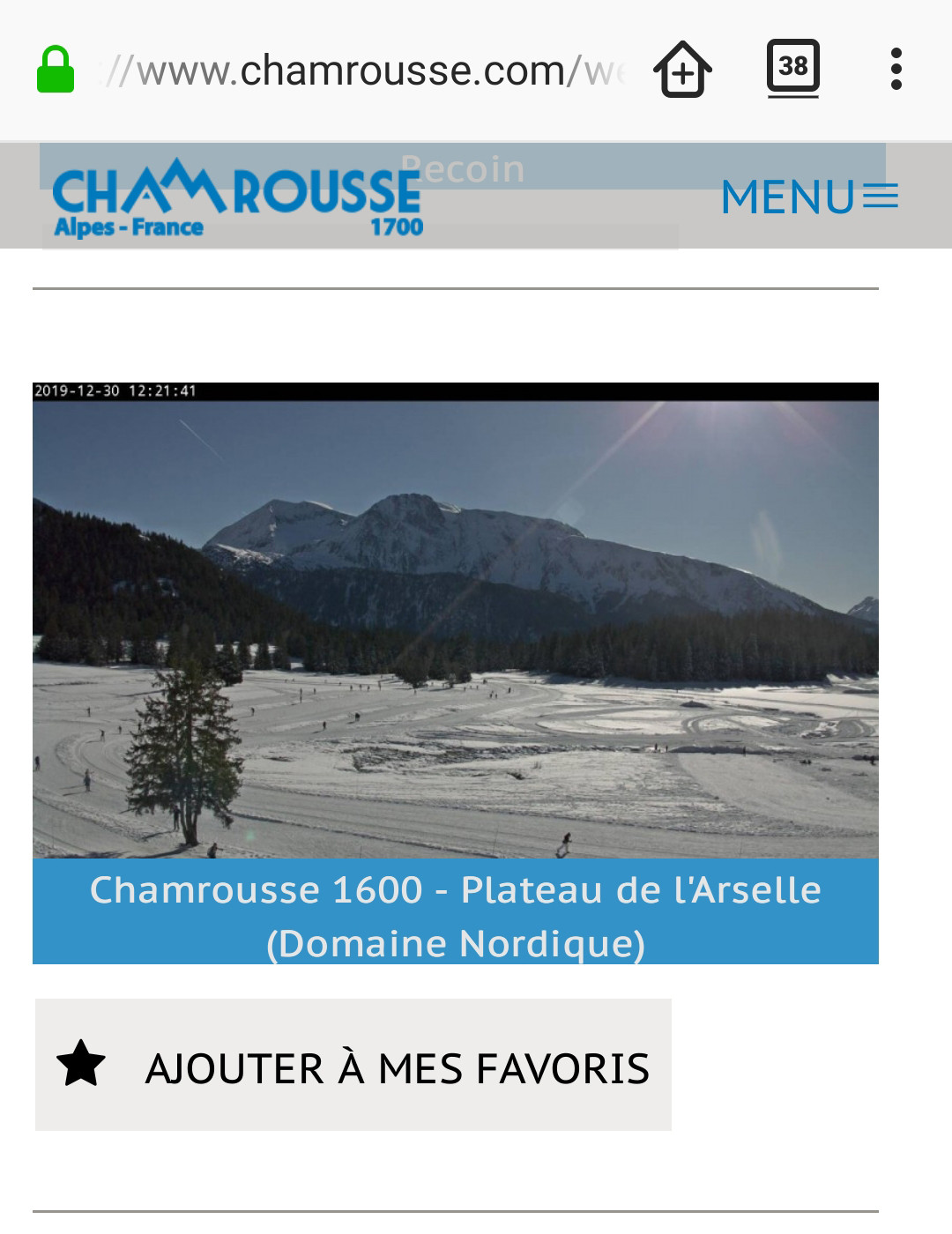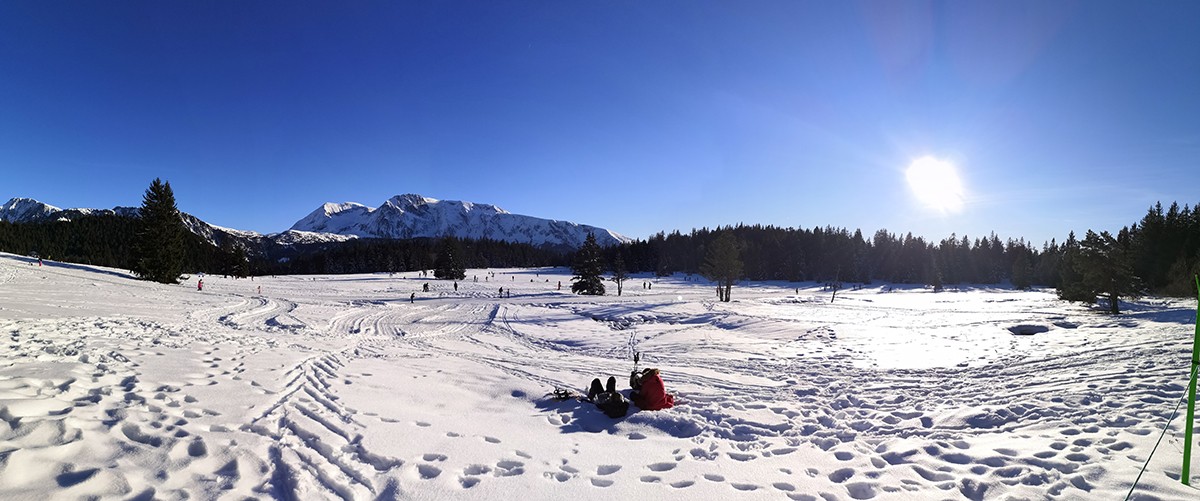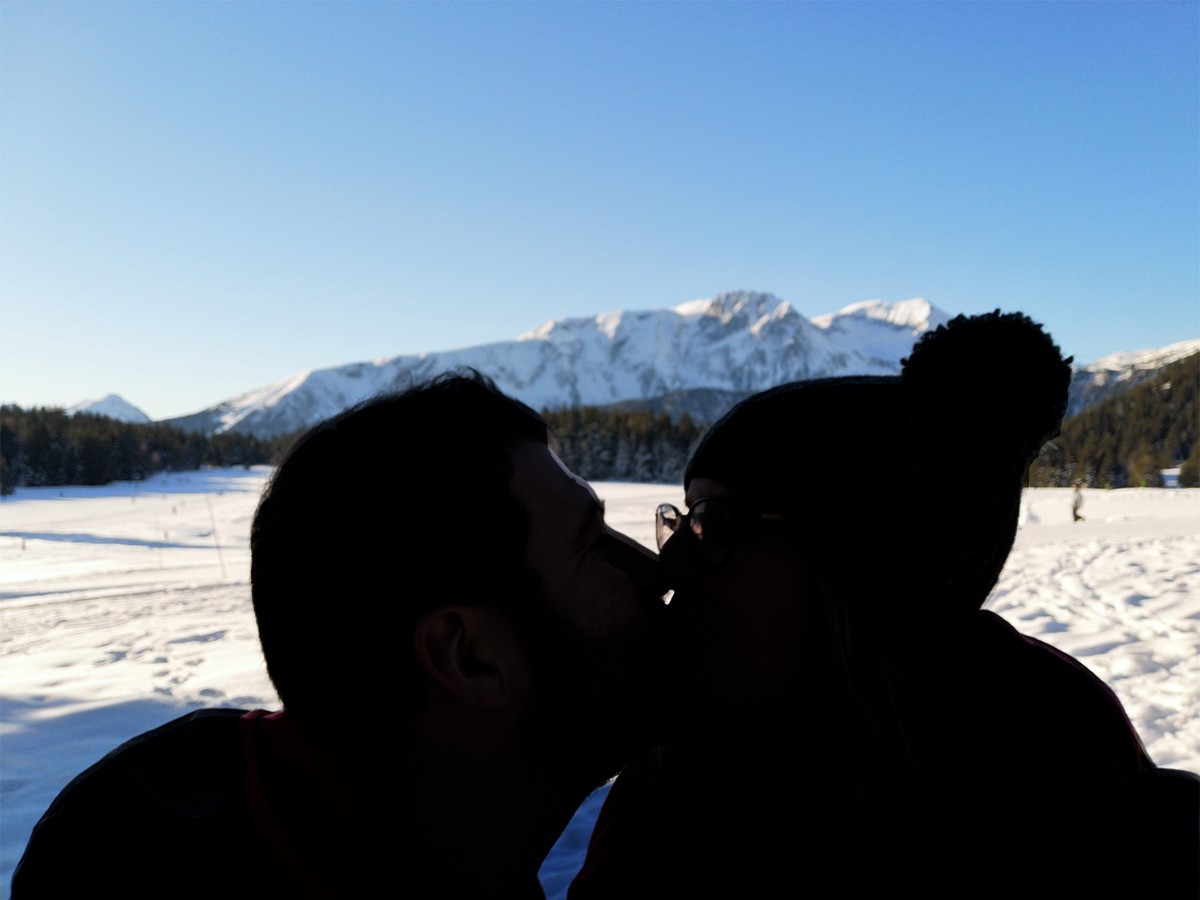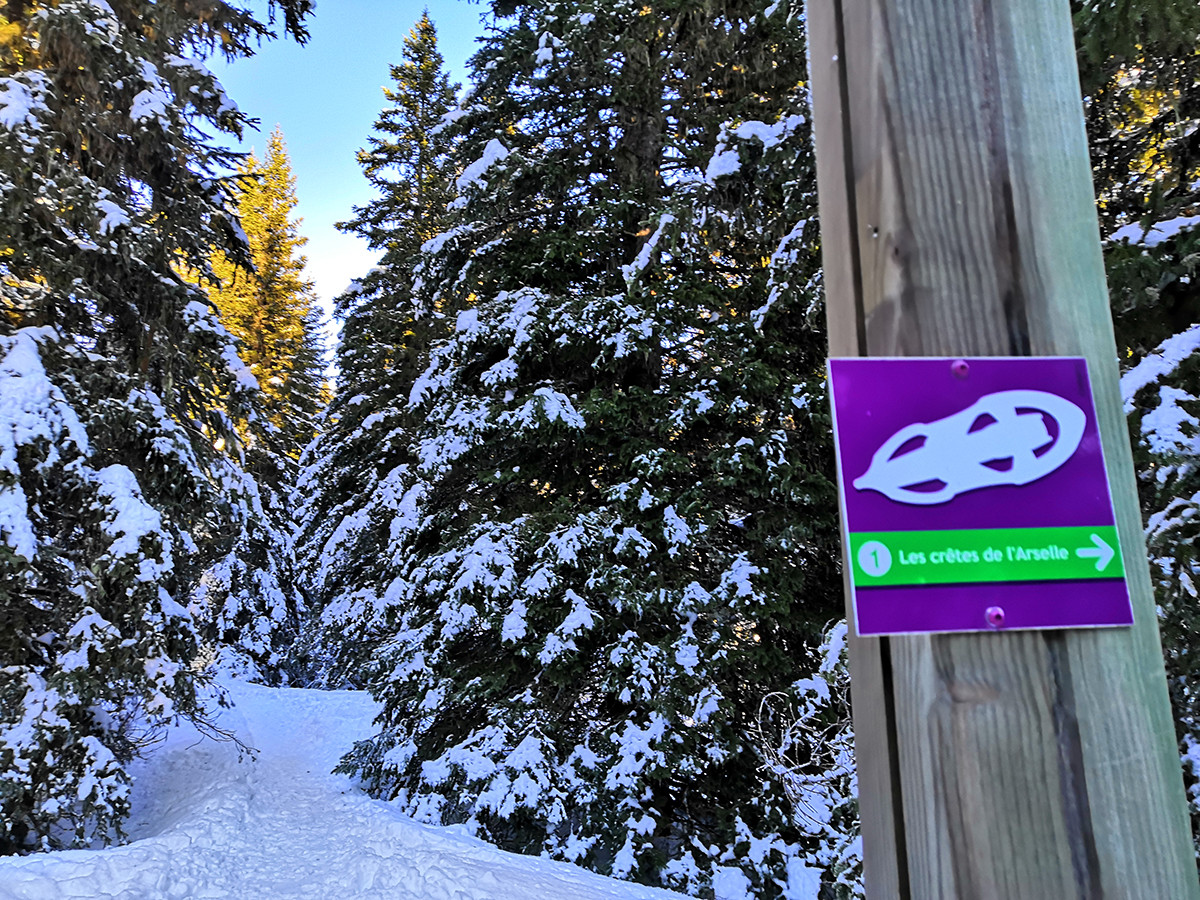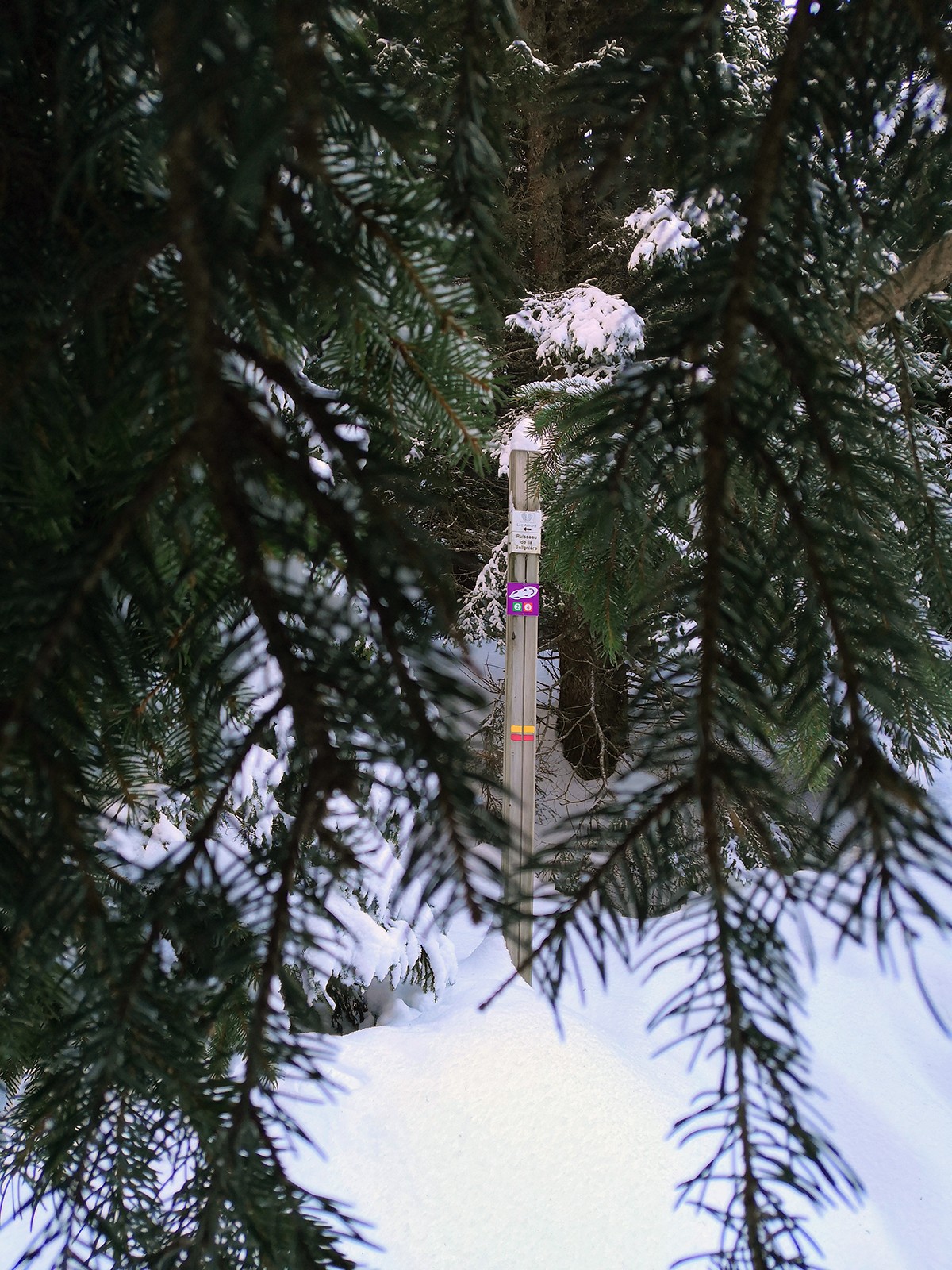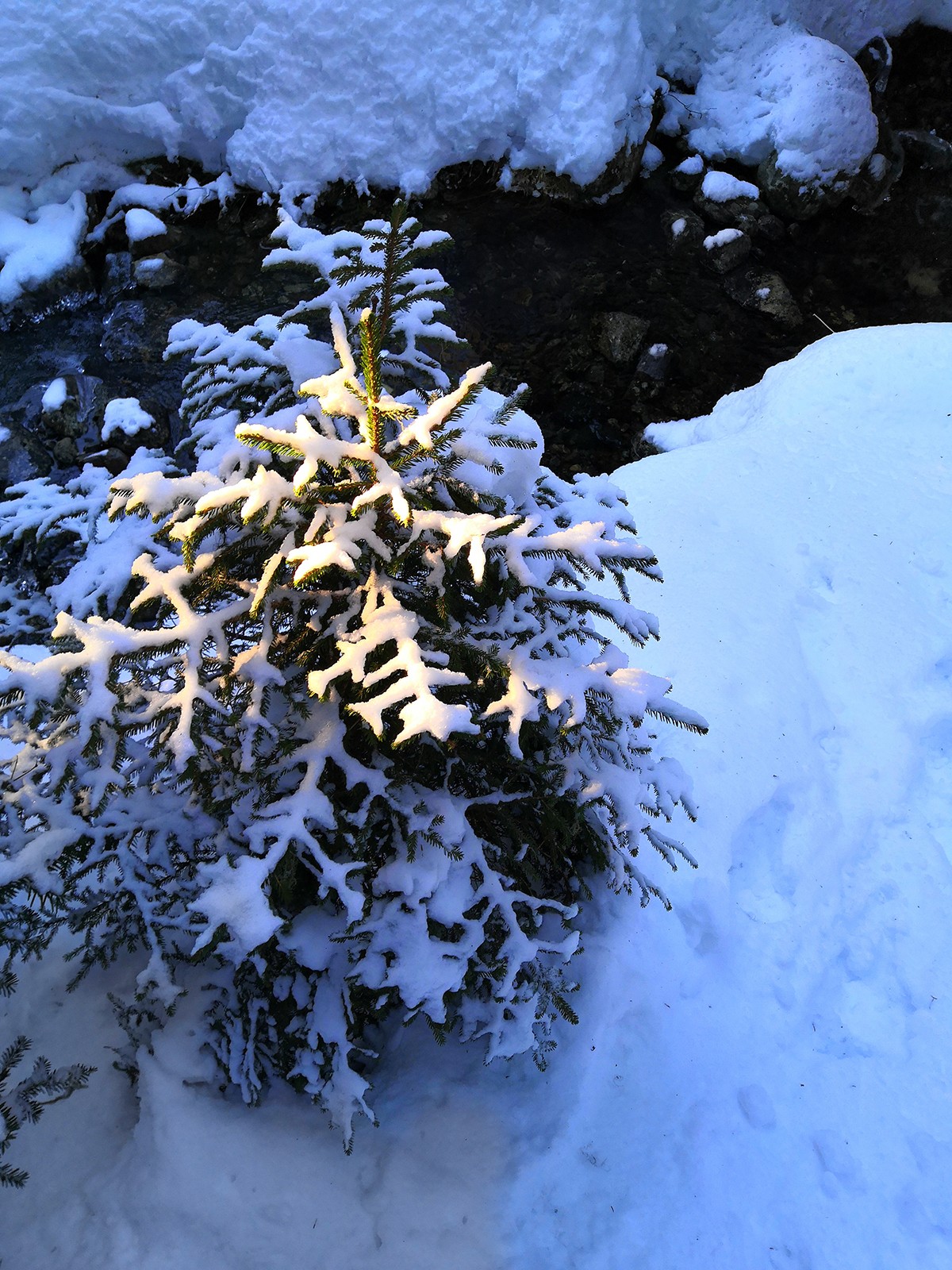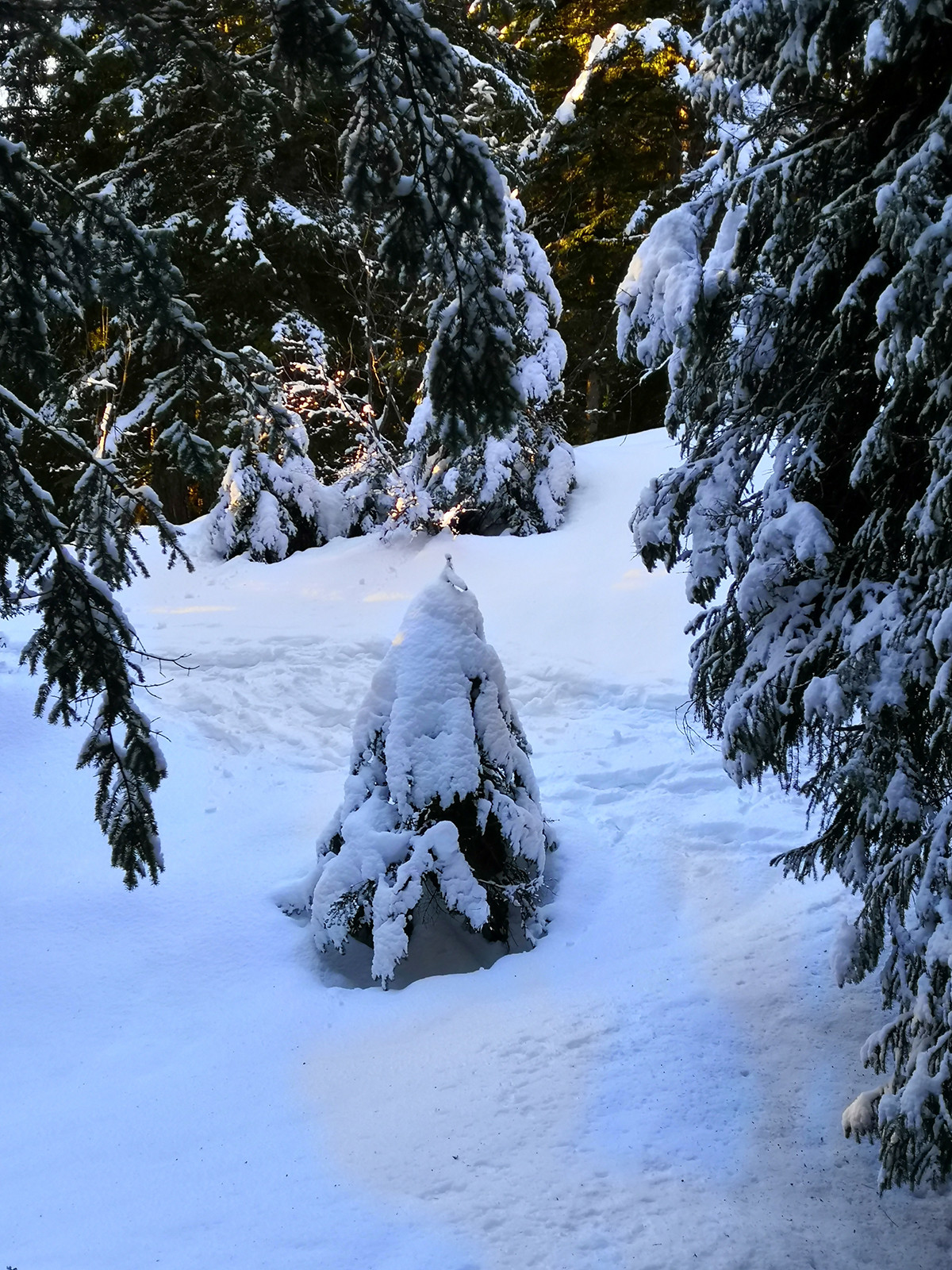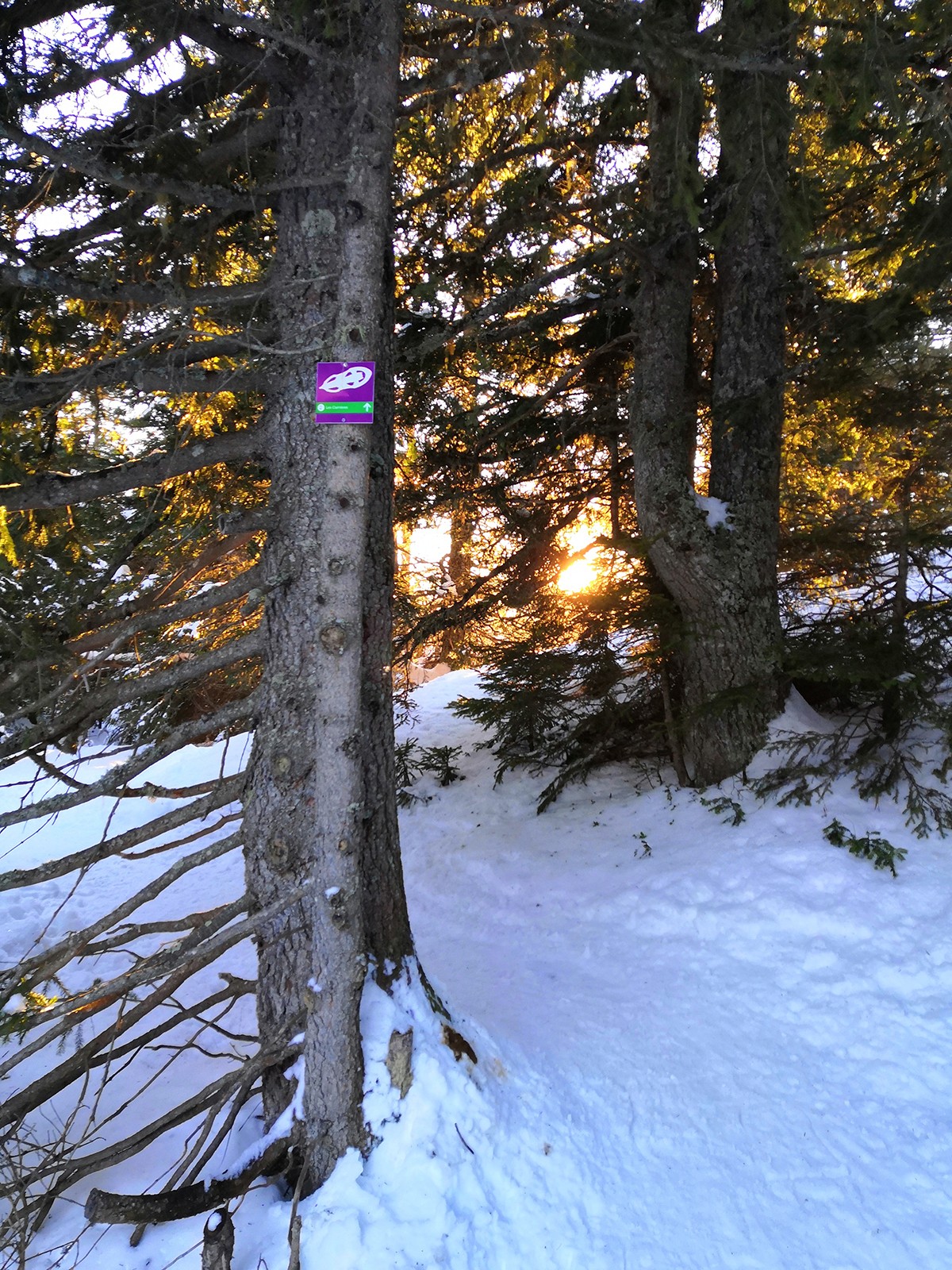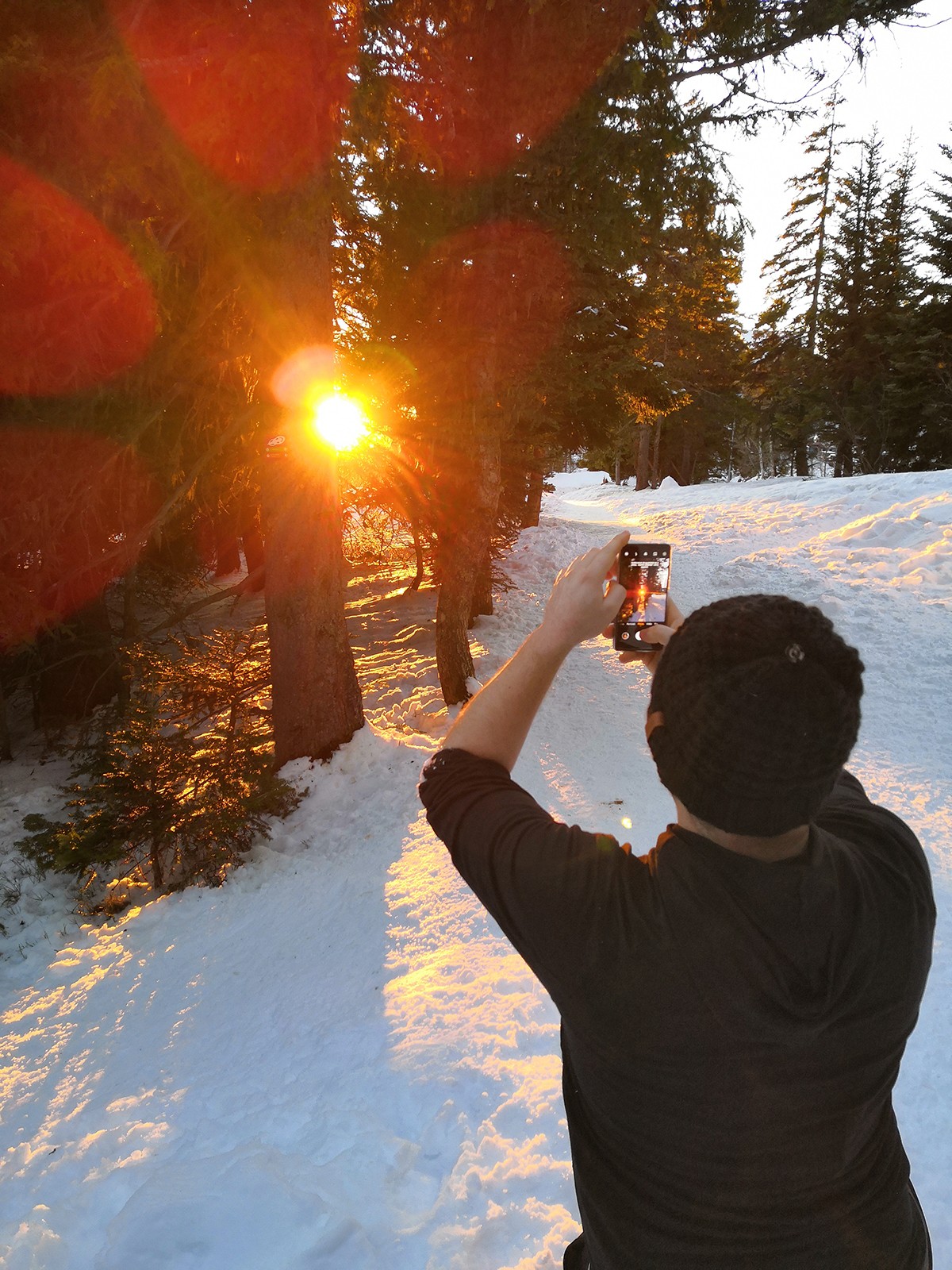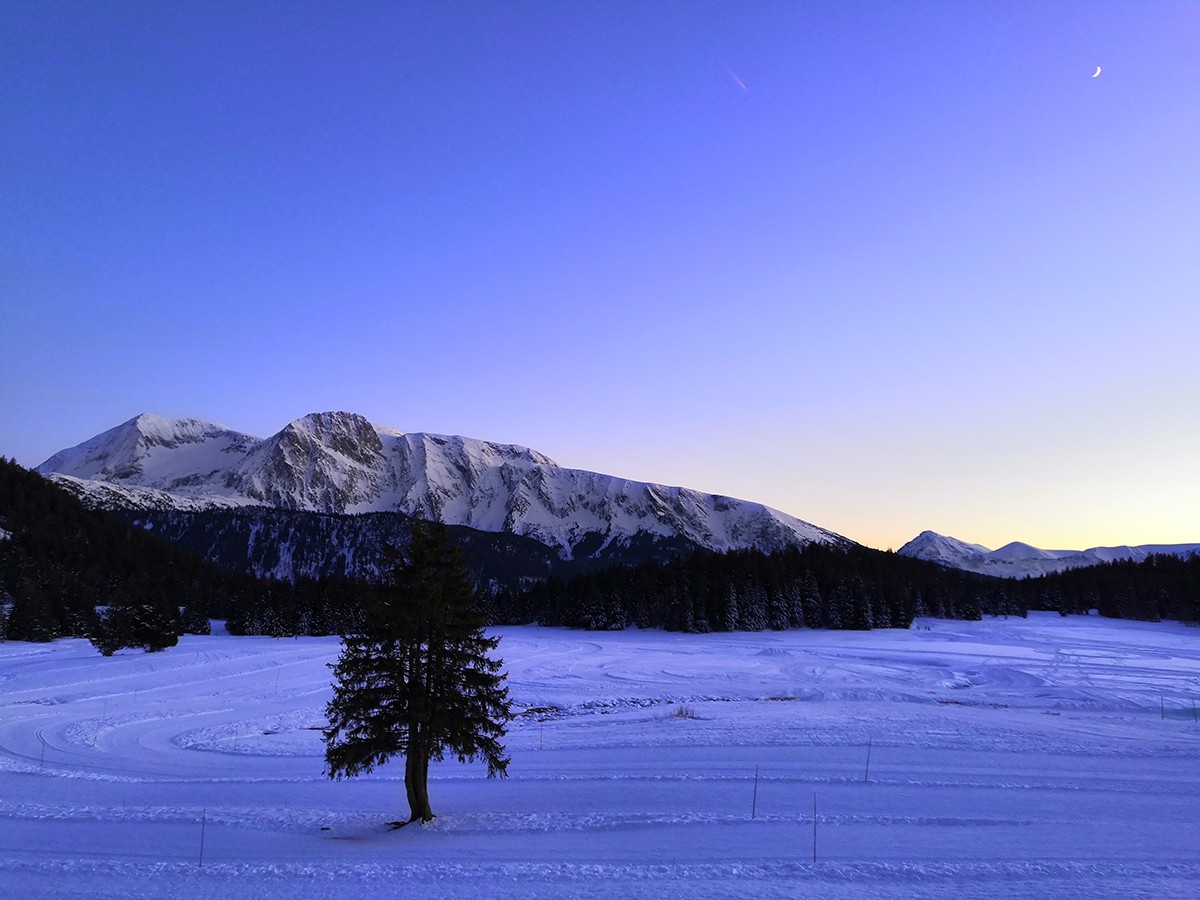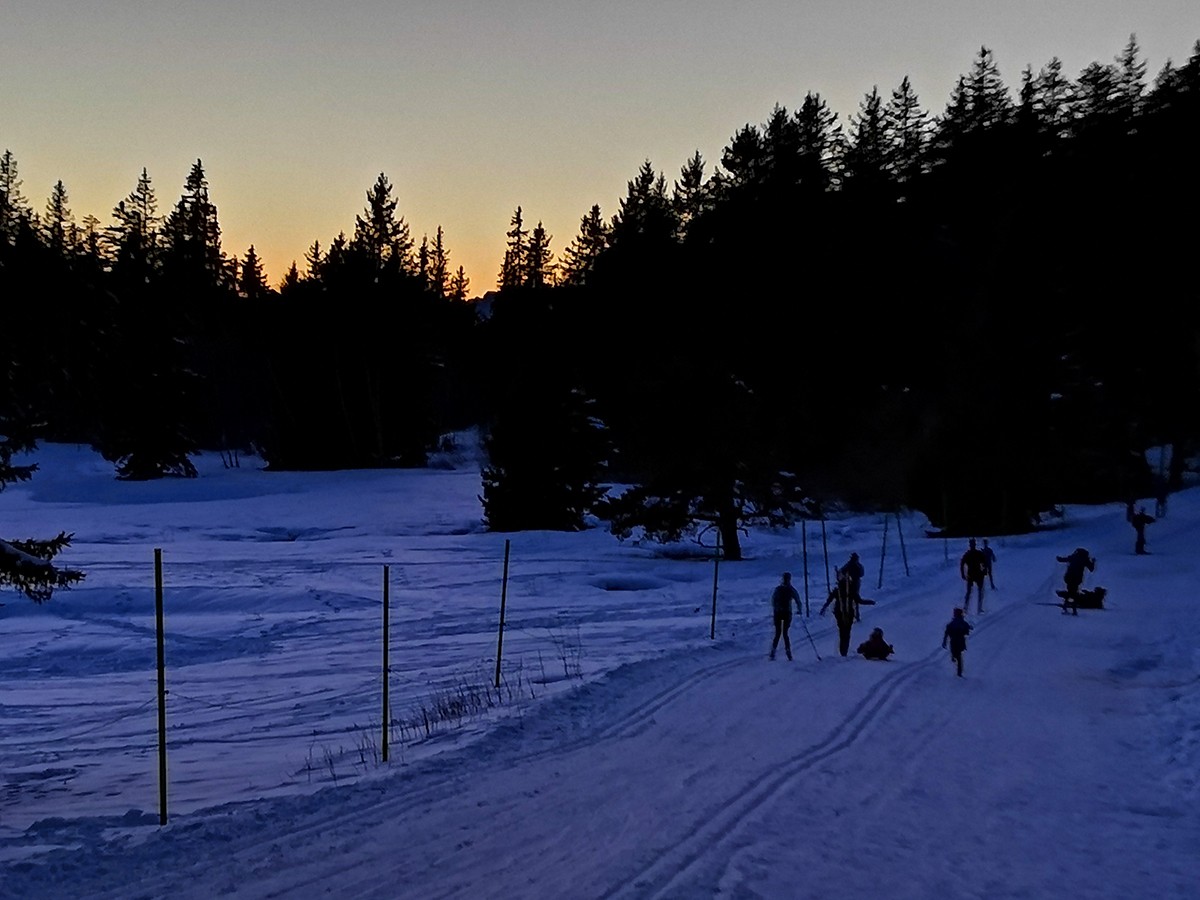Chamrousse heritage experience - Artitude
Presentation
I tested it for you: the Chamrousse heritage discovery tour
"Like a link between the worlds of skiing & mountains and architecture & art".
February 2023, Chamrousse 1750, art & architecture, with friends
Chloé, curious about local heritage
"Like a link between the worlds of skiing & mountains and architecture & art".
February 2023, Chamrousse 1750, art & architecture, with friends
Chloé, curious about local heritage
Today is a rather special day, as Yohann and I take a closer look at the cultural heritage of our favourite ski resort.
We're putting down our skis on this Friday afternoon of the holidays, to take some time to (re)discover the art and architecture that surrounds us, thanks to the "Artitude" guided tour offered in the Chamrousse events programme.
Head for Chamrousse 1750 at Roche Béranger, meeting point in front of the church, on the right after the Mairie. It's a mysterious building - you could walk past it without seeing it, but it's well integrated into the mountain landscape. There's no classic bell tower topped by a large cross, no stained glass windows, just an almost flat roof at road level, stone walls, wooden exterior and an almost hidden entrance...
We're putting down our skis on this Friday afternoon of the holidays, to take some time to (re)discover the art and architecture that surrounds us, thanks to the "Artitude" guided tour offered in the Chamrousse events programme.
Head for Chamrousse 1750 at Roche Béranger, meeting point in front of the church, on the right after the Mairie. It's a mysterious building - you could walk past it without seeing it, but it's well integrated into the mountain landscape. There's no classic bell tower topped by a large cross, no stained glass windows, just an almost flat roof at road level, stone walls, wooden exterior and an almost hidden entrance...
Surprising origins
We were welcomed by Bernadette (Chamrousse's cultural coordinator, now a volunteer because she's retired). There was a small group of 6 of us so that we could spend some quality time talking and listening.The tour starts below with the chapel, a place that is not normally open to the public (apart from guided tours and European Heritage Days).
Our guide explains how this modern-style church is a former ecumenical centre (several Christian religions: upper Catholic and lower Protestant) built as part of Chamrousse's 1960s urbanisation project, at the request of the neighbouring father, because the Recoin chapel had become too small. We discover the genesis of the architectural project by the architect-artist Pierre Jomain, through the original plan of the ecumenical centre built in 1968, with a multi-confessional Christian focus and an outdoor theatre.
It's a project that's extremely open to the world, for a ski resort on the eve of the 1968 Grenoble Olympics games, which today seems a little out of step with its immediate environment at the time, a mountain village that's a little remote and with mountain dwellers who aren't always very open-minded.
A unique low chapel
The low chapel, as its name suggests, has a low ceiling, but is also warm and welcoming thanks to its fir trunk floor, on which metal and wooden benches are placed.It is made up of several works by the French painter and sculptor Jean-Marie Pirot, known as "Arcabas", who is well known in the Chartreuse massif opposite and more unexpected in Chamrousse: a tabernacle made of wood and gilded with fine gold (no, "tabarnak" is not a Quebecois swear word, but a piece of furniture that houses the hosts), a sculpted wall, a mural fresco also in gold and the painting "La Madone à l'enfant" ("Our Lady and Child").
These are fragile works that need to be preserved, which is why they are not always accessible to the general public.
The painting has a special history, as it was painted of the Virgin Mary for a chapel dedicated to Protestant worship at the time (although Protestants did not worship the Virgin Mary). The painting was therefore removed and placed in storage. It was only after the return of Catholic cult that it could be exhibited there, and the painter Arcabas even donated it to the Church of the "Saint-Esprit" (Holy Spirit) in 2014.
The sculptures, created with the help of Jean-Marie Piraud, contribute to the décor and the unique atmosphere of this chapel. The rounded wall is divided into geometric shapes that give relief and let the light through, while the façade next to it is carved with gilded ethnic figures.
After an explanation of the site and its history, which has been listed as 20th-century contemporary heritage in the Rhône-Alpes region since 2010, we had a free moment to enjoy the play of light created by the fresco and the wall, which play with the sun's rays to bring this little egg-shaped chapel to life.
Bright upper chapel
We have to leave the lower chapel from the outside, as the interior staircase leads directly up to the priest's work area in the upper chapel. We paused in front of the church's main entrance to hear about its "ar(t)chitecture". Our guide talks a lot, and there's no stopping her, but she's a passionate person and a source of knowledge, who is happy to answer questions and fill us in with anecdotes.The upper chapel, the part devoted to Catholic worship, has a very different atmosphere, with large windows that let in the sunlight. Tucked away at the back is a fairly rough granite altar (a block of stone from the Drac, one of the tributaries of the Grenoble city Isère river and a sub-tributary of the Rhône river), which is that of the former chapel of Recoin, here enhanced as part of heritage conservation.
It's a pleasant place to be, even for atheists like us, because it blends in with nature, with its patio doors sliding up to take advantage of the outdoor seating (around 500 seats inside and 500 unfinished outside). It's a place full of serenity and conducive to meditation, not too cold and dark thanks to its large windows, everything is round and more organic, as if borrowed from the sacred feminine.
It was artist Pierre Székely and his wife Vera who worked here, with the historic altar, triangular seat and tabernacle carved with a blowtorch. He is also behind the totem poles that adorn Bachat Bouloud in Chamrousse 1700, a former children's holiday village built in the 1960s. It consisted of 8 chalets, each with its own totem pole, but only 3 remain, including the colourful and monumental "Ange assis" (Seated Angel).
Pioneering mountain architect Laurent Chappis was also responsible for the Bachat-Bouloud mountain centre for young people and the urbanisation of Roche Béranger in Chamrousse from 1959 to 1968.
Another relic of Chamrousse's history is a chasuble bearing the effigy of the 1968 Olympic Games, which the priest wears during mass (but which is not visible the rest of the time).
Conclusion
This visit to discover the resort's local heritage enabled us to rediscover a part of Chamrousse's history, because it's not just about the Olympics and skiing. It's a cultural bridge that links history and sport, like the shaft of light that links the two chapels and the two streams of Christianity. And even for non-believers, it's a short but complete and interesting experience: the building itself for the artistic and architectural aspect, and our guide for discovering the person through her passion, which she passes on with sympathy and enthusiasm.I'd definitely recommend taking time out to take this guided tour with Bernadette, whether as a family with children aged 7 and over, or as a group of old station regulars or curious youngsters.
And if you want to find out more, don't hesitate to visit the Chamrousse library, to browse through the books on the resort's art and architecture.
Chloé - in love with Chamrousse
For more information on culture and heritage in Chamrousse: Cultural events



